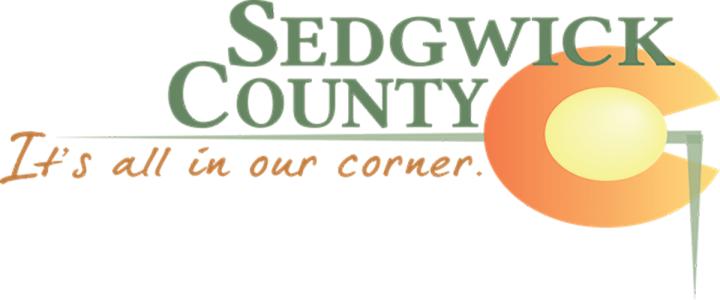

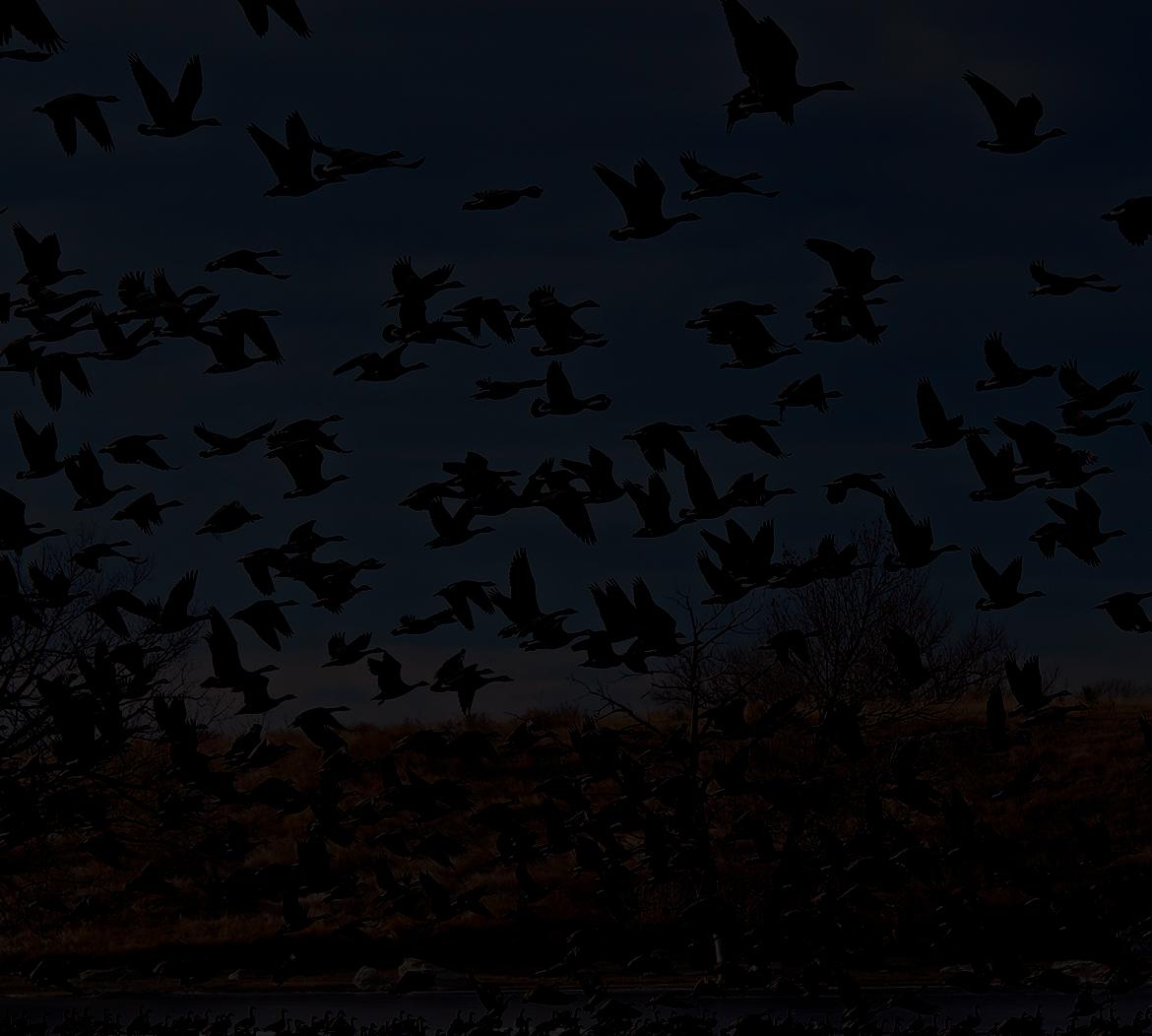 Presented By
Presented By
• Explore Colorado's only home station of the Pony Express. Capture the magic of the Annual Pony. Express Reride in June.
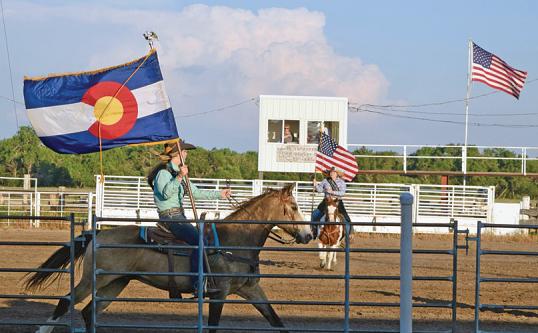
• Explore the gravesite of Thad Sowder in Ovid, original rider with the Buffalo Bill Wild West Show and first inductee into the Cowboy Hall of Fame.


• Explore Julesburg Reservoir, known to locals as "Jumbo",just outside of the town of Sedgwick, and the best place to boat, water ski, fish, swim and hunt small game.
• Explore the speed at Julesburg Dragstrip, oldest continuous operational race track in the country.
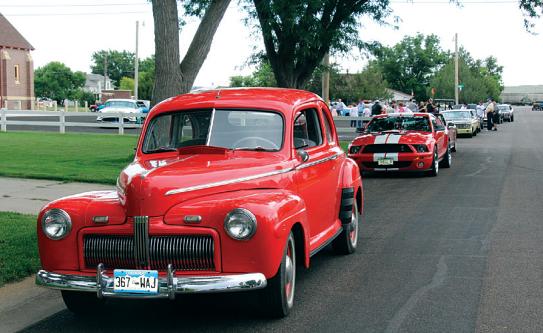
• Explore the route of the Transcontinental Railroad.













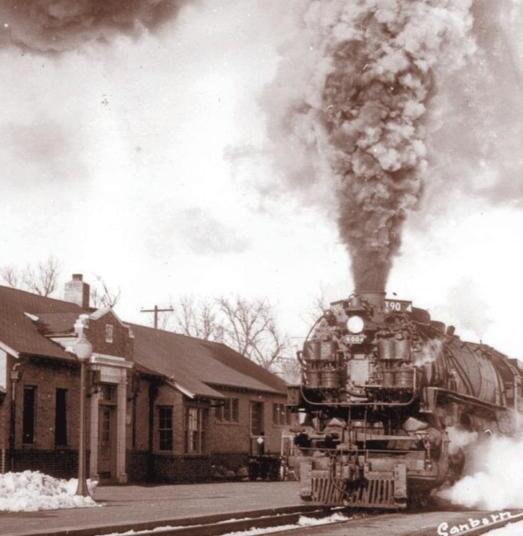


• Explore the historic Hippodrome Theatre.







• Explore our historic downtown shops.


• Explore Sedgwick Historic Jailhouse Museum.
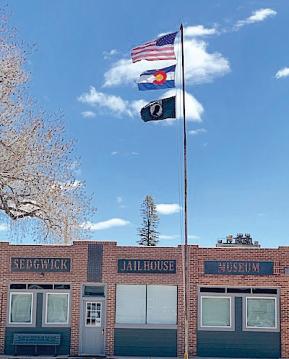
Visit Historic... https://sedgwickcounty.colorado.gov/ https://townofjulesburg.com/ https://www.sedgwickcolorado.com/ http://www.rivertrailonline.org/
For more information: call 970-474-3344 or inf maor tion: Travel the South Platte River Trail A Scenic and Historic Byway
SponSored by: The Sedgwick counTy commiSSionerS
2 WEDNESDAY, AUGUST 23, 2023 | OUTDOORS GUIDE | FORTMORGANTIMES.COM
2023-24 Fall and Winter Outdoor Guide
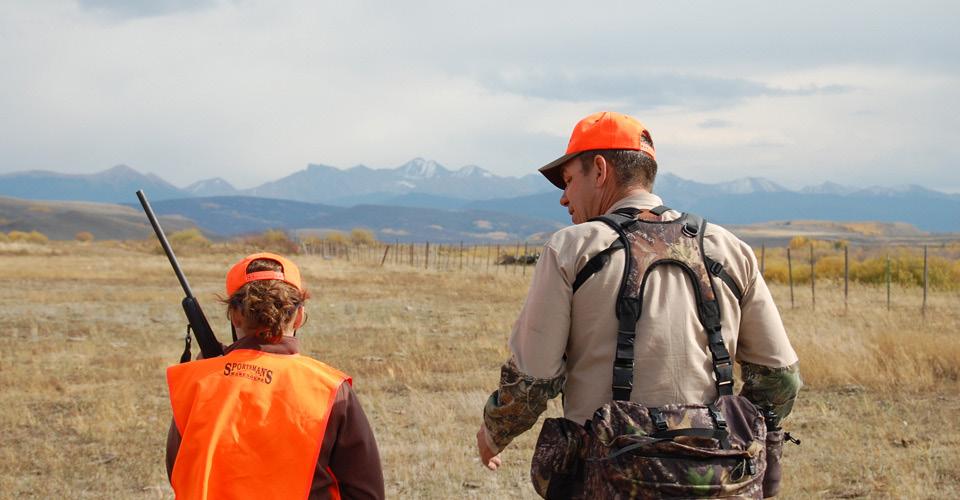
The 2023-24 Fall and Winter Outdoors Guide is a product of these newspapers
The Fort Morgan Times www.fortmorgantimes.com
Brush News-Tribune www.brushnewstribune.com
Journal-Advocate www.journal-advocate.com
Julesburg Advocate www.julesburgadvocate.com
Akron News Reporter www.akronnewsreporter.com
Project Staff
Brian Porter, publisher Sara Waite, editor Kristen Zoellner, production
Copyright 2023, Prairie Mountain Media



On the cover: A flock of Canada geese take flight in a photo by wildlife photographer Mack Hitch of Sterling.
Content and photos for this publication were provided by Colorado Parks and Wildlife, except where noted.
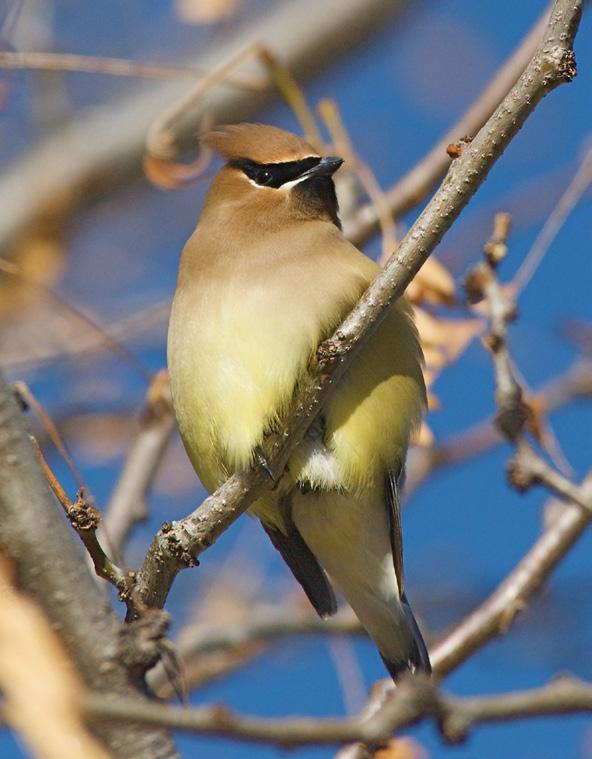
Inside
PHOTO COURTESY COLORADO PARKS AND WILDLIFE
All youth hunters must meet hunter education requirements, and youths under 16 must be accompanied by a mentor while hunting.
Colorado’s great outdoors enable us to be our best selves ............. 5 Expanded hunting opportunities for youth is a top goal for Colorado Parks and Wildlife .................................................................................. 6 State Wildlife Areas under new rules .................................................. 8 Sportsperson’s Roundtable seeks members ................................... 10 Applications sought for Draw Process Working Group members ................................................................................................ 11 Keep yourself and your pets safe ...................................................... 12 Recipes for the sportsperson’s kitchen ............................................ 13 Opportunities abundant in northeast Colorado ............................... 16 Birding With kids .................................................................................. 18 Take in the scenery from the seat of a bike ..................................... 19 No need for a telescope ...................................................................... 21 Keep safety in mind during winter .................................................... 22 3 | OUTDOORS GUIDE | FORTMORGANTIMES.COM WEDNESDAY, AUGUST 23, 2023
MACK HITCH — COURTESY PHOTO A cedar waxwing perches in a tree.


4 WEDNESDAY, AUGUST 23, 2023 | OUTDOORS GUIDE | FORTMORGANTIMES.COM
State’s great outdoors enable us to be our best selves
By Dr. Carrie Besnette Hauser Colorado Parks and Wildlife Commission
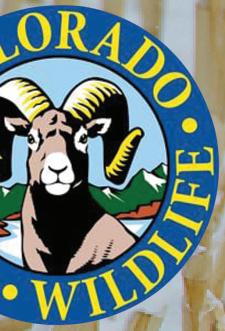
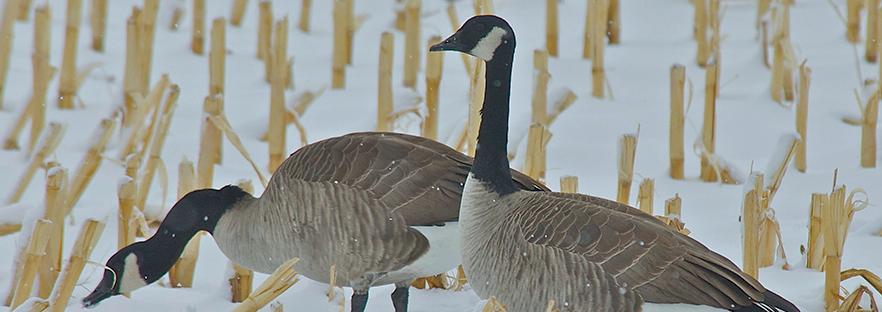
Coloradans love being outdoors, whether stargazing, birdwatching, or snowshoeing. We talk to strangers on hiking trails, swapping stories about the bald eagle or elk that was just spotted or the fish in the lake up ahead.
Such experiences are common when people leave their daily stresses behind and escape to enjoy the natural resources managed by Colorado Parks and Wildlife (CPW). They neutralize the things that can divide us — as urbanites or rural residents, as multi-generation or newer Coloradans, as members of various political parties. And, when our differences melt away, our shared appreciation of our state’s magnificent landscapes and countless species of plants and wildlife comes into focus.
CPW strives to connect people to the outdoors and its successes are due, in part, to the 13-member Commission that sets policy to fulfill CPW’s mission: “to perpetuate the wildlife resources of the state, to provide a quality state parks system, and to provide enjoyable and sustainable outdoor recreation opportunities that educate and inspire current and future generations to serve as active stewards of Colorado’s natural resources.”
Over the past several years, the CPW Commission has strived to bridge many contentious topics, including the reintroduction and

management of gray wolves.








Whatever your position on this issue, the results of a state ballot measure required the Commission and a dedicated team of CPW personnel to employ every possible means to engage and ensure all voices were heard as a wolf plan was developed over the past two years.
The final Colorado Wolf Restoration and Management Plan is the result of unprecedented planning, valuable input by stakeholder and expert working groups, and robust public participation ultimately totaling 4,000 written comments and hundreds made by people testifying in person. The plan is better because of this engagement.
The final plan is also better because Colorado law requires the voting members of the Commission to come from a well-balanced cross section of interests in the state. These gubernatorial appoin-





tees include: three sportspersons who purchase hunting or fishing licenses — one of which must be an outfitter; three agricultural producers; three persons who engage in outdoor recreation and utilize parks resources including one who represents a nonprofit organization supporting the conservation of Colorado’s wildlife and habitat; and two at-large representatives. The Commission must also be politically balanced and include four residents of the western slope. The Commissioner of Agriculture and Executive Director of the Colorado Department of Natural Resources are also nonvoting members.
In May, the Commission passed the wolf plan unanimously, a result that seemed improbable when Proposition 114 passed narrowly in 2020. The approaches we employed to develop the plan can serve as a model for how to build consensus, reach compromise, and forge solutions around divisive issues for all residents and regions of the state.

Another CPW success story rooted in compromise is the Keep Colorado Wild Pass, which offers a new funding model for Colorado’s state parks and will help CPW keep pace with increased park usage. Beginning this year, Coloradans began seeing the $29 pass added to their vehicle registration through the Division of Motor Vehicles. Paying the optional fee gives purchasers access to state parks and the added benefit of supporting our public lands, wild-
life and fragile habitats in a meaningful way.


Winding down my final term on the Commission, I’m most grateful to my fellow Commissioners. Building relationships and finding common ground has not always been easy. And we’ve done this time and time again. From an unanimously supported wolf plan which balanced the success of a species with the livelihoods of our western slope ranchers and agricultural producers, to collaborating with the Department of Natural Resources to name a new CPW Director, to supporting over 1,000 employees who kept pace during historic times and rose to the occasion including: park rangers who have responded to a record number of recent water-related fatalities, biologists monitoring our big game herds, wildlife officers helping spread Bear Aware messages to reduce wildlife conflicts, Aquatic Nuisance Species inspectors fighting to keep invasive mussels out of Colorado’s waterways, budget and policy analysts, interpretive educators, and many more.
It is this team of talented CPW professionals that creates the conditions for us to set aside our differences, nurture our souls and replenish our spirits in Colorado’s great outdoors.






For more information, visit cpw. state.co.us.
 Dr. Carrie Besnette Hauser is the 2021-23 chair of the Colorado Parks & Wildlife Commission. She lives in Glenwood Springs.
COLORADO PARKS AND WILDLIFE COMMISSION
COURTESY PHOTO
Dr. Carrie Besnette Hauser is the 2021-23 chair of the Colorado Parks & Wildlife Commission. She lives in Glenwood Springs.
COLORADO PARKS AND WILDLIFE COMMISSION
COURTESY PHOTO
THE FALL & WINTER OUTDOORS GUIDE is a special publication in coordination with Colorado Parks & Wildlife. Prairie Mountain Media wishes to thank Colorado Parks & Wildlife for photos, stories and information provided for republication in this section. Please visit cpw.state.co.us for a full complement of outdoors recreation information. 5 WEDNESDAY, AUGUST 23, 2023 | OUTDOORS GUIDE | FORTMORGANTIMES.COM
Dr. Carrie Besnette Hauser is the 2021-23 chair of the Colorado Parks & Wildlife Commission. She lives in Glenwood Springs.
Expanded hunting opportunities for youth is a top goal for CPW
By Colorado Parks & Wildlife
One of the foremost goals at Colorado Parks and Wildlife is to expand youth opportunity and turn first-time hunters into lifelong sportspeople. Offering more chances at success builds the foundation of solid hunting skills and passes down the appreciation of the outdoor lifestyle we cherish.
To that end, CPW now offers youth more opportunities than ever before to head into the field to harvest a big-game animal. The former late-season elk hunts are now an extended season, giving youths a chance to harvest antlerless deer or elk throughout the rifle seasons, and doe pronghorn during all December seasons in the state, as well as the season in units 9 and 191 that runs until Jan. 31, 2023.
Below are explanations and documents to help youth purchase a license and plan where to hunt during the extended season.
Know the basics
• Youth ages 12-17 have an opportunity to keep hunting if they don’t harvest a deer, elk or pronghorn with their original license.
• To participate in the extended season, youth must first draw a limited license for: antlerless deer, or antlerless or either-sex elk or pronghorn. If the original license remains unfilled when the season ends, then the youth can hunt the same species during the extended season after they convert their original license to a female (antlerless) license.
Limited licenses can be purchased through the draw, the leftover draw, vouchers and/or from the leftover list.
Youth with unfilled antlered tags for elk or deer and buck pronghorn may not participate in extended season hunting.
Youth can easily convert their unfilled limited either-sex elk or either-sex pronghorn license (where
the season has ended) to a female (antlerless) license through the new Youth Extended Hunt License Conversion Request form online. Li-
censes can also still be taken into a CPW office in person to be converted.
• Youth hunters must be accom-
panied by a mentor who is 18 or older and also meets hunter education requirements. Youths and mentors must be able to see and hear each other while hunting.
Elk and deer
Youth can continue hunting deer or elk during an antlerless hunt in any regular rifle season, with a few exceptions. Youth may choose to hunt in multiple antlerless rifle hunts to take full advantage of the extended season. If a youth doesn’t harvest with the original license, they have the potential to continue hunting the first-rifle season, second-rifle season, third-rifle season and fourth-rifle season (as long as there are eligible hunts available) until they harvest an animal.
Here’s how to get the most out of the extended season:
• Choose your species. Decide before you buy your original limited license what species you want to hunt in the extended season. If you buy an elk tag, you can only hunt elk in the extended season. If you buy a deer tag, you’ll hunt deer in the extended season.
• Buy your tag. Purchase a limited license that meets the requirements.
To help plan where to buy your original license, CPW has lists available online for deer and elk hunts to compare where your original license is good and where you’ll be able to hunt in the extended season.
• Choose when to hunt. If your original license remains unfilled when your season ends, you then have the option to hunt an antlerless animal during any open rifle season where there is an antlerless hunt taking place for the species on your original license. (Does not include Ranching For Wildlife.)
• Choose where to hunt. Extended season hunting is outlined on CPW’s maps. Youths may hunt during the extended season in any GMU within the red border that

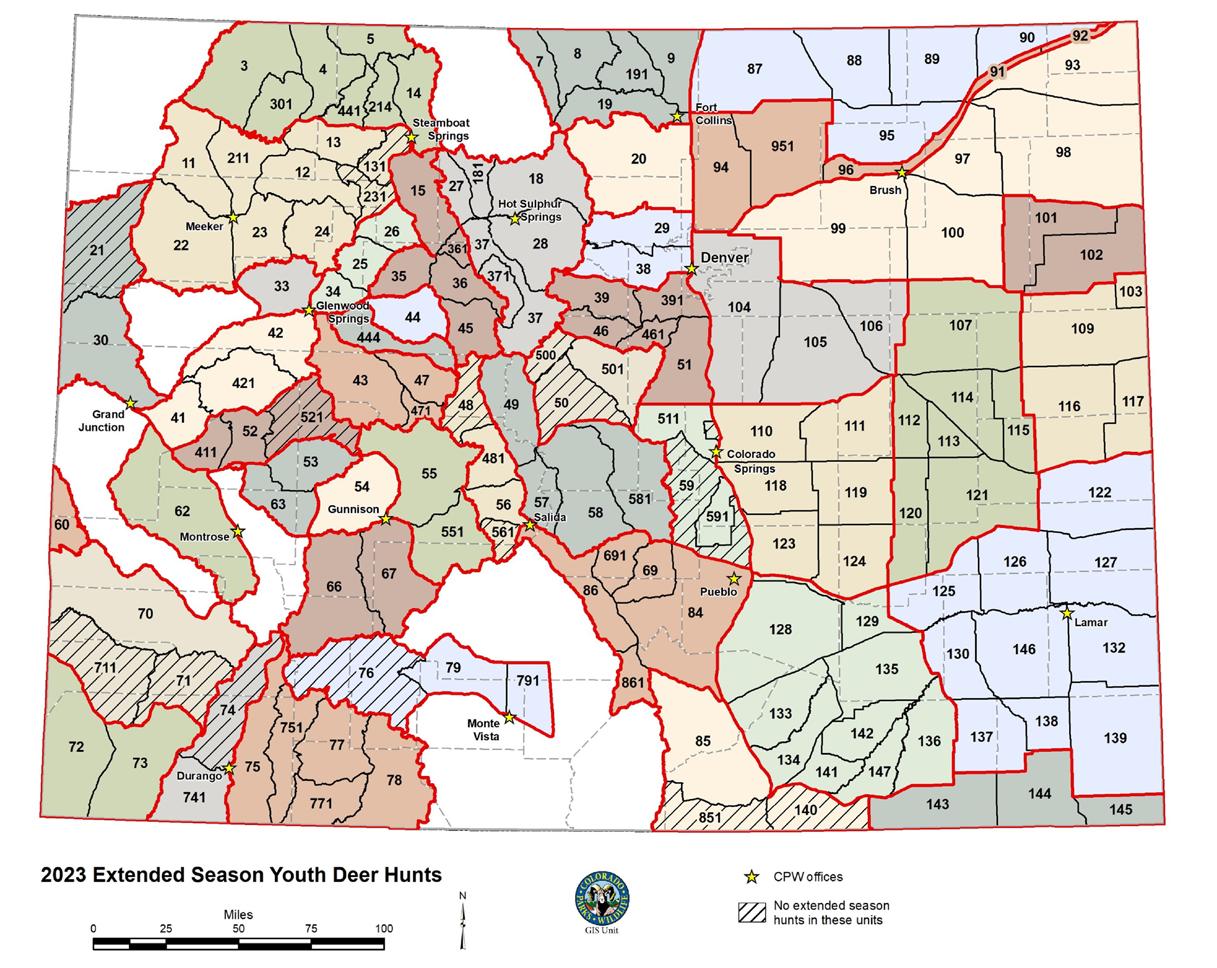
HUNTING
2023 Extended Season Youth Deer
HUNTING » PAGE 7
2023 Extended Season Youth
| OUTDOORS GUIDE | 6 FORTMORGANTIMES.COM WEDNESDAY, AUGUST 23, 2023
COURTESY COLORADO PARKS AND WILDLIFE
Hunts
COURTESY
COLORADO PARKS AND WILDLIFE
Elk Hunts
Hunting
FROM PAGE 6

also contains the GMU where their original license was valid. This information can be found on page 18 of the Big Game brochure.
• Follow the rules! No matter
what the original license, youths must follow all the rules of rifle hunting if they participate in the extended season. This includes wearing legal hunter orange and following any unit restrictions where they choose to hunt (such as descriptions of hunting boundaries, private-land-only and Whitetail only designations). Remember,
unfilled either-sex elk licenses must be taken to a CPW office for conversion to an antlerless license before hunting any extended seasons.
Pronghorn
Colorado Parks and Wildlife’s Youth Hunter Outreach Program offers free educational hunting opportunities for youth to ensure their first experiences in the field are safe and ethical. Trained and experienced staff and/or volunteers lead youth participants through clinics, seminars, and actual hunts in the field. HUNTING
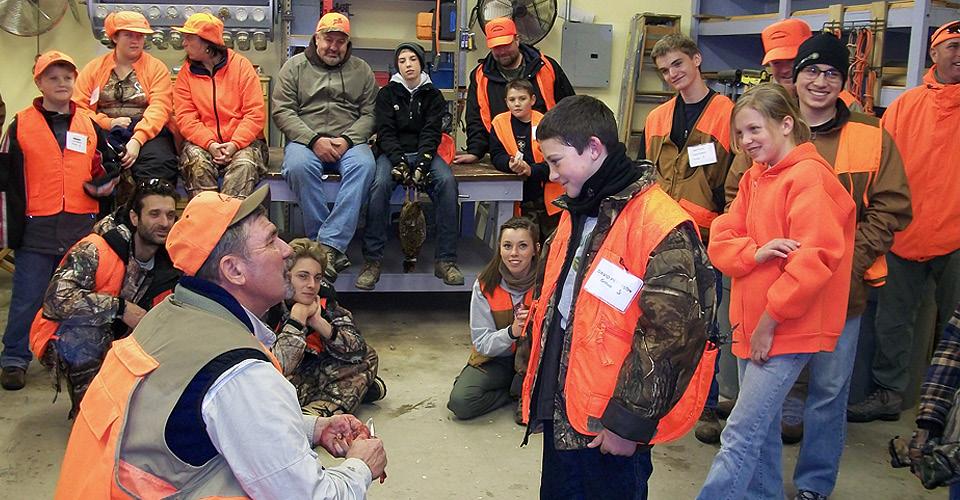
Rules for youths hunting prong-
horn in the December season have been updated in May 2023.
• Find a list of eligible youth late pronghorn hunts at https:// cpw.state.co.us/Documents/Hunting/BigGame/Youth/Youth-Late-
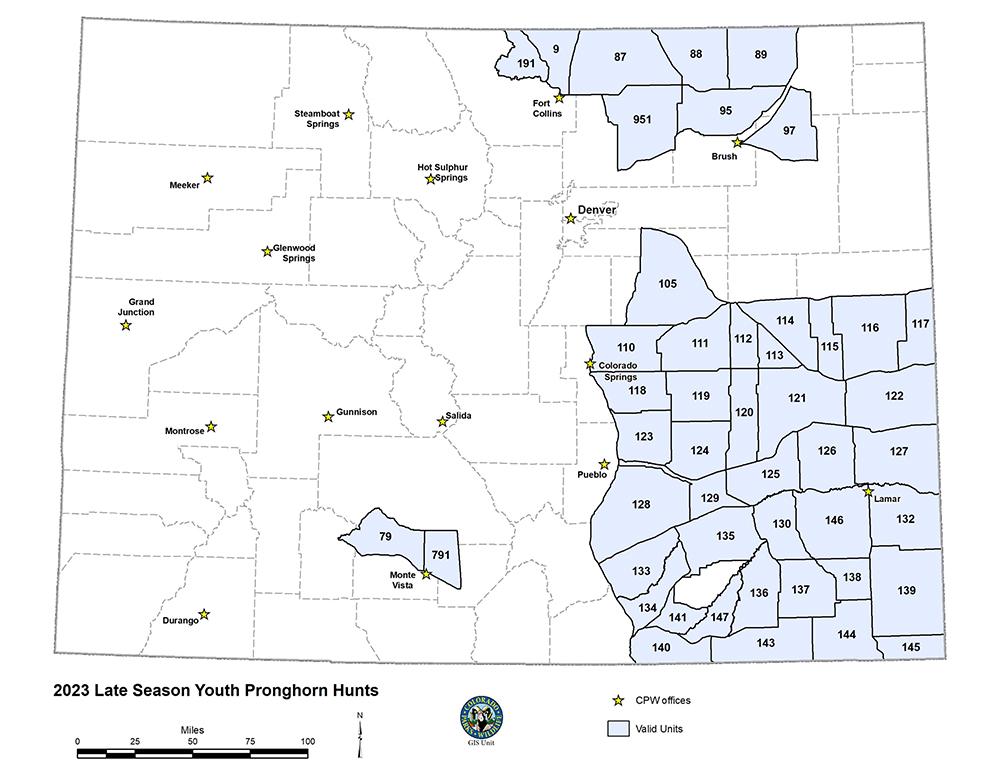 COURTESY COLORADO PARKS AND WILDLIFE 2023 Late Season Youth Pronghorn Hunts
CPW PHOTO
COURTESY COLORADO PARKS AND WILDLIFE 2023 Late Season Youth Pronghorn Hunts
CPW PHOTO
7 WEDNESDAY, AUGUST 23, 2023 | OUTDOORS GUIDE | FORTMORGANTIMES.COM
» PAGE 10
State Wildlife Areas under new rules
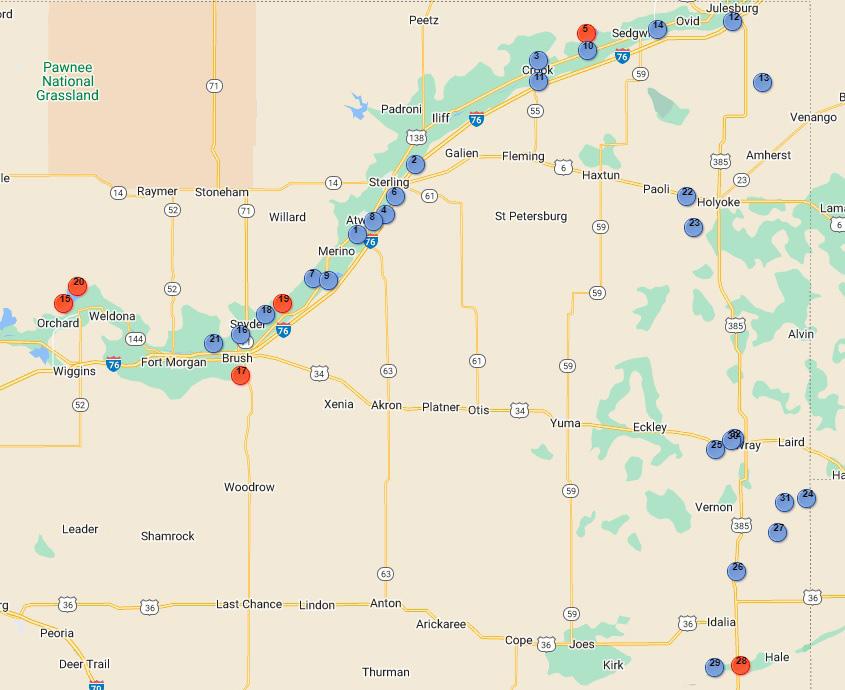 By Colorado Parks & Wildlife
By Colorado Parks & Wildlife
New regulations went into effect Aug. 1 for Colorado Parks and Wildlife’s State Wildlife Areas.
Changes to regulations that standardized and clarified language for permissible activities on State Wildlife Areas won unanimous approval at the Parks and Wildlife Commission’s June 22 meeting. This is the next phase of work that began in 2020 to address impacts to State Wildlife Areas due to increased visitation and the impacts to wildlife habitat.
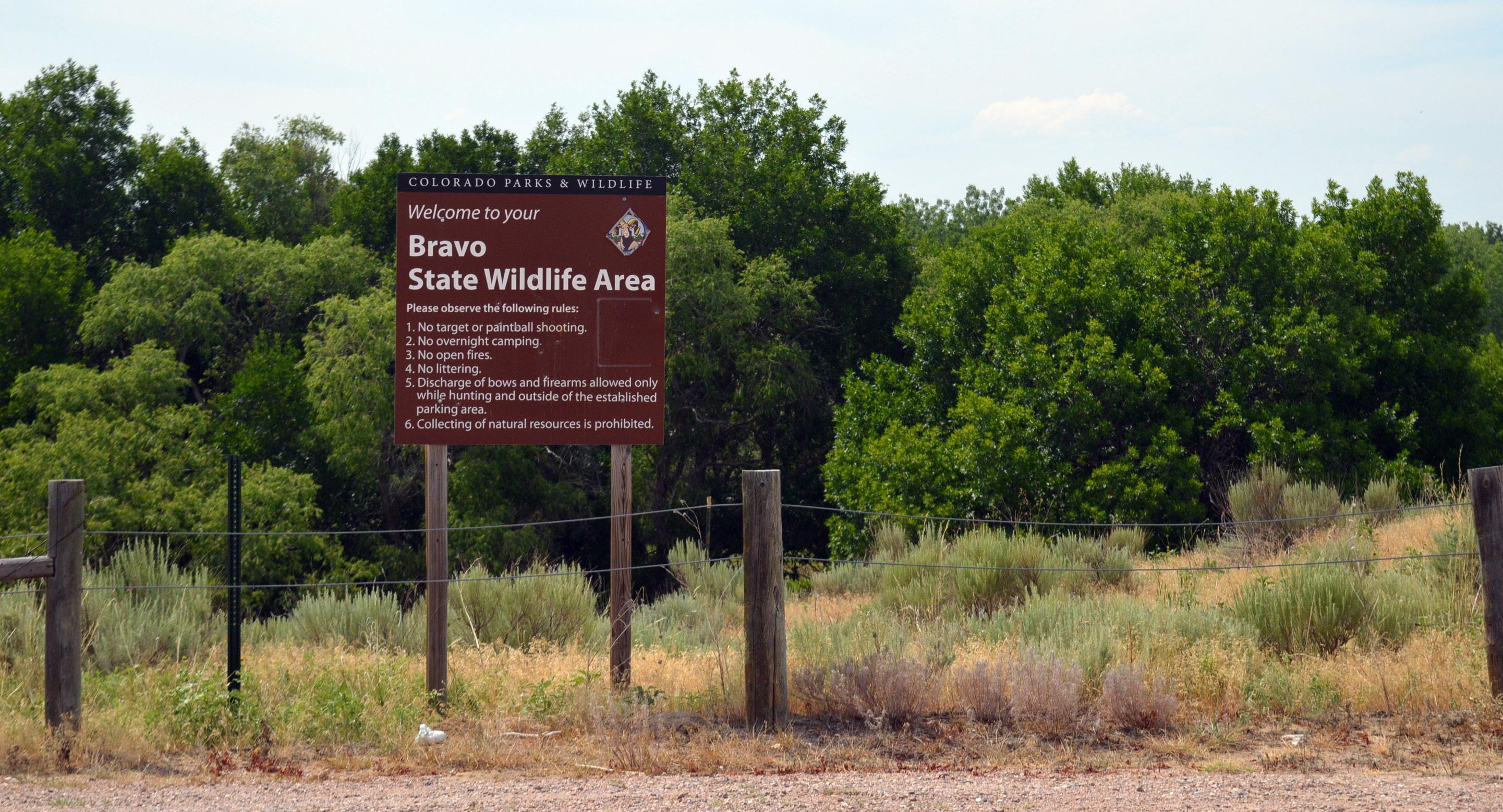
“These revisions will help CPW protect critical wildlife habitat across the state for current and future generations,” said CPW Director Jeff Davis.
Colorado Parks and Wildlife manages about 350 State Wildlife Areas. SWAs are paid for primarily by sportspersons and managed for the benefit of wildlife. These areas
may also offer wildlife-related recreation and potentially opportunities for other forms of recreation when not in conflict with wildlife or wildlife recreation.
In December 2019, the Area Wildlife Managers, in consultation with CPW staff managing the SWAs, began analyzing what negative impacts were occurring and coming up with ideas and solutions to these problems.
To help manage increasing recreation at SWAs, CPW began requiring a valid hunting or fishing license, or an SWA access pass, for anyone 16 or older accessing most SWAs.
Additionally, a working group of CPW staff and stakeholders proposed updates to the SWA general provisions and property-specific regulations. General provisions are regulations that are applicable to all SWAs, except for State Trust Lands (or if explicitly allowed or disallowed in property-specific reg-
COLORADO PARKS & WILDLIFE FILE PHOTO
The Bravo State Wildlife area northeast of Sterling is one of more than 300 managed by the Colorado Parks and Wildlife Division.
SCREENSHOT COURTESY OF COLORADO PARKS AND WILDLIFE Map showing State Wildlife Areas in six-county area of northeast Colorado. RULES » PAGE 9
8 WEDNESDAY, AUGUST 23, 2023 | OUTDOORS GUIDE | FORTMORGANTIMES.COM
ulations).

The public was also invited to submit comments on the proposed changes before adoption by the Parks and Wildlife Commission. The comment period was open for a six week period from April 12 through May 24.
You can refer to the regulation changes document to view all of the changes (beginning on page 6) and learn more about how the changes affect SWAs near you (property specific provisions begin on page 13).
While the general provision changes include new restrictions, some restrictions may not apply to all SWAs (e.g., allowing camping at certain properties).
Mark Lamb, Area Wildlife Manager for Area 1, said CPW wildlife officers would be implementing an education campaign for the first year after the changes are in effect to ensure everyone is aware of how new regulations may be affecting their favorite SWA before handing out citations for any violations of new reg-
ulations.
“Making these updates to our regulations was the culmination of a lot of hard work by staff, stakeholders and with key input from the public throughout the process,” said Lamb.
The 2023 Colorado State Recreation Lands Brochure, available online and in CPW offices, has all the updated regulations for SWAs.
Northeast Colorado SWAs
The six counties of northeast Colorado (Logan, Morgan, Phillips, Sedgwick, Washington and Yuma) are home to 32 State Wildlife Areas managed by Colorado Parks and Wildlife, covering over 60,000 acres (acreages listed are approximate):
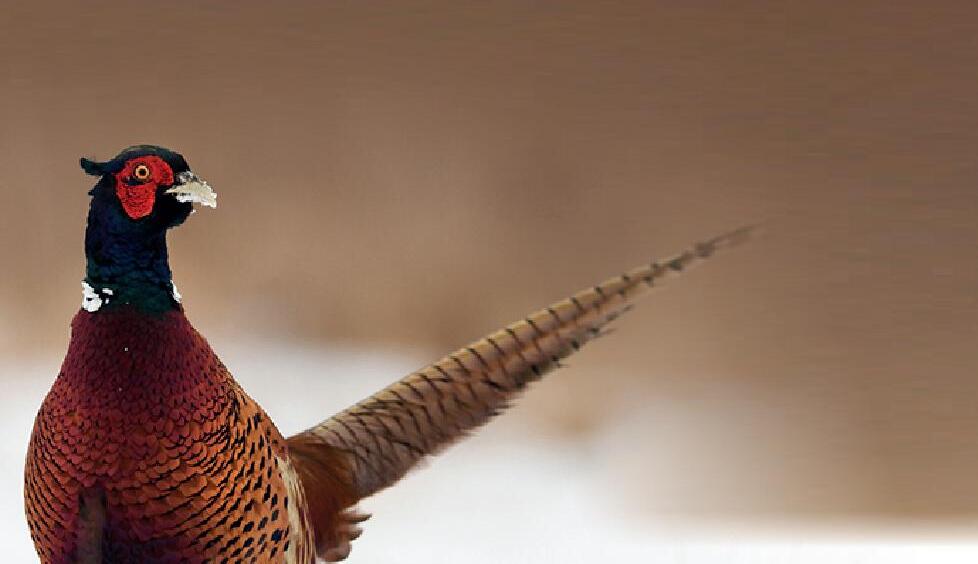
Andrick Ponds — 711 acres, Morgan County
Arikaree — 2,320 acres, Yuma County
Atwood — 180 acres, Logan County
Bravo — 1,082 acres, Logan County
Brush — 588 acres, Morgan County
Brush Prairie Ponds — 1,600 acres, Morgan County

Cottonwood — 884 acres, Morgan County
Duck Creek — 1,121 acres, Logan County
Dune Ridge — 400 acres, Logan County
Elliott — 2,576 acres, Morgan County
Frenchman Creek — 69 acres, Phillips County
Holyoke — 80 acres, Phillips County
Jackson Lake — 394 acres, Morgan County
Jean K. Tool — 903 acres, Morgan County
Jumbo Reservoir — Logan County
Knudson — 581 acres, Logan
County

Messex — 680 acres, Logan, Washington County
Overland Trail — 192 acres, Logan County
Prewitt Reservoir — 2,924 acres, Logan, Washington County
Pony Express — 1,854 acres, Sedgwick County
Red Lion — 1,297 acres, Logan County
Sand Draw — 209 acres, Sedgwick County

Sandsage — 287 acres, Yuma County
Sandy Bluffs — 3,183 acres, Yuma County
Sedgwick Bar — 885 acres, Sedgwick County
Simmons —2,157 acres, Yuma County
South Republican (Bonny) — 18,365 acres, Yuma County
South Republican (Kleweno Parcel) — 1,880 acres, Yuma County
Stalker Lake — 75 acres, Yuma County
Tamarack Ranch — 10,696 acres, Logan County
Willow Creek — 920 acres, Yuma County
Wray SFU — 374 acres, Yuma County
PAGE 8
Rules FROM
“Making these updates to our regulations was the culmination of a lot of hard work by staff, stakeholders and with key input from the public throughout the process.”
WELCOME HUNTERS AND BIRD WATCHERS! Visit the best kept secret in Nor theast Colorado. Visit Br ush! BRUSH PRAIRIE PONDS Nestled 2.5 miles south of Brush on Clayton Street. This wildlife area features plentiful pheasant and ducks. Hunt nine different ponds, two of which are reserved for Brush residents Visit cpw.state.co.us or call 970-842-6300 for hunting reservation information. Following your hunt, please visit The Course Cafe at Petteys Park, featuring a full restaurant menu and daily drink and dining specials. Follow lunch by playing the premier 9-hole golf course in all of Nor theast Colorado. BRUSH STATE WILDLIFE AREA Located 2.5 miles nor th of Brush on Highway 71. Whether hunting or viewing wildlife, common game includes deer, pheasant, turkey, quail, dove and waterfowl Access also available to bass, bluegill and trout for anglers on Char tier Pond. 9 WEDNESDAY, AUGUST 23, 2023 | OUTDOORS GUIDE | FORTMORGANTIMES.COM
— Mark Lamb, Area Wildlife Manager for Area 1
COLORADO PARKS AND WILDLIFE
Sportsperson’s Roundtable seeks members
By Colorado Parks & Wildlife
Colorado Parks and Wildlife (CPW) is accepting applications from hunters, anglers and trappers in the Southeast and Northwest regions to join the statewide Colorado Sportsperson’s Roundtable. The application period is open through Friday, Sept. 22. Representatives will serve two-year terms from October through September 2025.
The statewide Sportsperson’s Roundtable and regional Sportsperson’s Caucus meetings are facilitated by CPW to gather feedback and advice from our state’s hunters and anglers in order to make the best decisions about the management of fish, wildlife, and habitat. CPW aims to maintain a geographically diverse membership that includes appointed and delegated members from around the state with interests in hunting, trapping and fishing.
CPW is managed in four administrative regions, generally encompassing the four corners of the state. Representatives must reside in the region they represent.
CPW is currently looking to fill three open seats; two representing the Southeast region and one rep -

resenting the Northwest region. The Northeast and Southwest regions expect seats to be open for new members in 2024.
Responsibilities of members include:














• Must participate in two halfto full-day meetings each year. In-person attendance is encouraged. Travel to meetings is at the member’s expense.
• Must participate in occasional virtual meetings.
• Must share information and ideas with Roundtable members and senior CPW staff on issues pressing to sportspersons.
• Contact information must be shared publicly on the CPW Roundtable webpage.


• Must be available to sportspersons around the state to share and discuss information pertinent to the Roundtable.
Volunteering for the Sportsperson’s Roundtable is a great opportunity to share information with Colorado Parks and Wildlife on recreation and management issues that are relevant to hunters, anglers, and trappers.
How to apply
• Must fill out an application regarding your experience hunting,
fishing or trapping, your affiliation with sportspersons organizations, and ability to fulfill member responsibilities.
• Online application is available here: https://forms.gle/HBRfEo5sy242u4aZ6 (A printed version is available upon request)
• Application period open Aug. 9 to Sept. 22, 2023. Must apply before the deadline.
CPW staff will make selections and notify you about whether or not you are selected. For more information about the process, please email Jonathan Boydston at jonathan.boydston@state.co.us.
Colorado Sportsperson’s Roundtable
Hunters and anglers are vitally important to Colorado Parks and Wildlife and to the successful management of Colorado’s wildlife. Sportspersons are directly affected by the agency’s fish and wildlife management decisions and provide much of the funding for wildlife conservation in the state. Colorado Parks and Wildlife encourages effective channels for consulting with the state’s hunters and anglers through the Sportsperson’s Roundtable and Regional Sportsperson’s Caucuses.
The Colorado Sportsperson’s
Roundtable is made up of individual members who represent a broad range of interests related to hunting, fishing and trapping in Colorado. These interests include, but are not limited to, small and big game hunting, sport fishing, outfitting and other sportsperson-dependent businesses.
The Sportsperson’s Roundtable is a statewide panel of 16 or more statewide members appointed by CPW and at least two delegates from each of four Regional Sportsperson’s Caucuses. The statewide Roundtable meets in person twice a year to help the agency by sharing information, discussing important topics and identifying emerging issues.
Four Regional Sportsperson’s Caucuses also hold meetings twice a year. Caucus meetings are open to all local hunters and anglers to discuss regional issues. Caucus delegates then share this information with the statewide Roundtable. Regional Caucus delegates are selected through a separate process determined by sportspersons who participate in the Regional Caucus meetings.
For more information about the Sportsperson’s Roundtable and Regional Sportsperson’s Caucuses, visit CPW’s website.
FROM PAGE 7
Pronghorn-Hunts.pdf.
• Youths must purchase an original limited license for doe or either-sex pronghorn for anywhere in the state. Buck licenses are not eligible.
• Unfilled either-sex limited li-



censes must be taken to a CPW office to be converted to a doe license before hunting in a December season. Doe licenses do not need to be converted and may continue to be used as-is during the December
season.
• Youths must follow all of the rules for the December season they hunt, including unit boundaries and private-land designations.
Hunting
OF FLEMING THE FIRST NATIONAL BANK ST Your community bank. 970-265-2555 www.fnbfleming.com Logan County’s only home owned bank Complete Auto and Light Truck Repairs • Brake Ser vice • Performance Issues • Complete Engine & Transmission Repair / Replacement • Complete A / C Diagnostic & Repair Diesel Ser vice & Fleet Care welcome Factor y and performance repair on all Powerstroke • Cumming’s • DuraMax GANDEE AUTOMOTIVE & DIESEL REPAIR LLC JERRY GANDEE, OWNER 1602 US HWY 6, STERLING, CO (970) 554-AUTO-2886 OF AUTO & DIESEL REPAIR EXPERIENCE 32 Years COME SEE JERRY GANDEE, DANIEL KNIGHT, ABEL MARTINEZ, MANDY MARTIN, AYDEN GANDEE AND JORDAN GERTNER GANDEE AUTOMOTIVE & DIESEL REPAIR LLC 10 WEDNESDAY, AUGUST 23, 2023 | OUTDOORS GUIDE | FORTMORGANTIMES.COM
COLORADO PARKS AND WILDLIFE
Members sought for Draw Process Working Group
Board will review current hunting draw rules and processes
By Colorado Parks & Wildlife
Members of the public are invited to apply to join the Colorado Parks and Wildlife (CPW) Draw Process Working Group. Applicants must apply by Monday, Aug. 28 at 5 p.m.
The agency is seeking applicants representing both resident and nonresident hunters to review current draw rules and processes. Representatives will ideally include hunters with various levels of preference points and differing method of take preferences.
CPW will seek a diverse and inclusive membership that is balanced among interest areas. The working group will include eight members of the public, five CPW
staff members, two CPW administrators and three Parks and Wildlife Commission (PWC) members.
What action is CPW taking?
At the May PWC meeting, the PWC requested CPW staff form a Draw Process Working Group. The purpose of the working group is to analyze the agency’s current hunting draw rules and processes in order to identify ways to reduce complexities and find new solutions and alternatives to fix some of the current preference point issues as well as other draw-related issues. The working group will also focus on addressing the biological and sociological concerns related to Colorado’s limited license draws.
The Draw Process Working Group will be convened to:
• Provide input on the current draw rules and processes.
• Brainstorm ways to reduce complexities in the current system.
• Formulate potential solutions and alternatives to address issues

with the current system. How to qualify
CPW is seeking a working group that is as diverse as possible, representing a variety of ages, ethnicities, socioeconomic backgrounds, genders, etc. The Draw Process Working Group will consist of inclusive representation from diverse backgrounds, perspectives, and geographic regions in Colorado.
Members must demonstrate:
• Familiarity or interest in hunting and big game management and conservation.
• Composure and respect when working with those with different experiences, backgrounds, and perspectives.
• The ability to engage productively in the Draw Process Working Group’s business and to provide timely input on all work products and deliverables to the PWC.
Preference will be given to applicants who bring a broad range of experience in multiple categories.

How to apply
The application is available on our Engage CPW applications page. Applications must be received by Monday, Aug. 28 at 5 p.m. If you have any questions or need clarification on the application, please email dnr_ cpw_planning@state.co.us.
Following a review of applications, CPW may invite top candidates to participate in an interview. The CPW Director will approve appointments to the Draw Process Working Group following the application and review process coordinated by CPW.
Additional information
The frequency of the Draw Process Working Group meetings is still being determined but is currently scheduled to consist of four to five all-day meetings from November 2023 through June 2024. Meetings may be held on weekdays, weekends or evenings. Meet-
TRIP TRIP TRIP
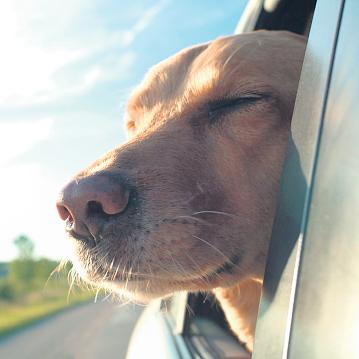
G O G O
MEMBERS » PAGE 13 ROAD ROAD ROAD
Discover more at: www.CityofFortMorgan.com G O MORGAN www.Cityoffortmorgan.com FORT TRIP ROAD TRIP ROAD TRIP ROAD 11 WEDNESDAY, AUGUST 23, 2023 | OUTDOORS GUIDE | FORTMORGANTIMES.COM
While Fort Morgan, Colorado, is uniquely known for a lot of things - Bobstock Music Festival; the final resting place of science fiction writer Philip K Dick; and one of the most vast & challenging disc golf courses in the state, it is also a popular destination on the eastern plains and Interstate 76 for a weekend get-away. Experience the vibes, quaint shops, and pioneering heritage an hour from Denver.
Keep yourself and your pets safe
By Colorado Parks & Wildlife
Colorado Parks and Wildlife is sharing important information to keep you, your family and your pets safe from rattlesnakes. This summer, an 11-year old boy was bitten by a rattlesnake during a biking accident near Golden. He fortunately survived thanks to his father’s quick action.
To learn all about rattlesnakes, please listen to our informative podcast episode discussing them by clicking here. CPW Species Conservation Coordinator Tina Jackson has spent the last 20 years learning about snakes, and she shared her knowledge of rattlesnakes in this episode.
Why are people bitten and what is the result?
Rattlesnakes have an elaborate
defensive strategy, seeking to avoid the need for a venomous bite if possible. Most of the time, rattlesnakes will not strike at people unless they feel threatened or are deliberately provoked.
While attacks on people are rare
F r i e n d s a n d f o o d a t C a b l e s P u b & G r i l
and usually not fatal for a healthy adult, bites are very painful and should always be taken seriously. Bites can have an increased effect on children and pets due to their smaller size.
Ecology and behavior
A basic understanding of the biology and behavior of rattlesnakes can help you avoid unwanted encounters. Rattlesnakes often warm themselves in the sun, hunt, migrate and den in the same areas year after year.
• Rattlesnakes are not built for speed, waiting in the same locations for hours, or days for a prey animal to walk by. Because of their slow speed, rattlesnakes will usually stand their ground when threatened.
• Rattlesnakes use camouflage to blend in with their surroundings and in most cases will ignore people, thinking you cannot see them.
• Hunting usually occurs in the late afternoon and evening once the snakes have warmed up their bodies. When temperatures allow, rattlesnakes may also prowl for food in the early afternoon or at night.
Awareness and avoidance
The best way to avoid dangerous encounters with any wildlife is awareness and avoidance. Always be aware of your surroundings using your eyes and ears, and avoid wildlife that you see or hear.
• Watch for snakes basking in open, sunny areas such as pavements, rocks, trails or roads. It is acceptable to walk off trail to avoid them.
• Watch where you place your hands and feet at all times, watching for areas such as rocks or logs that could be sheltering a rattlesnake.
• Do not hike with headphones or earbuds in so you can listen for a rattlesnake’s distinctive rattle.
• Protect your feet and ankles as they are usually closest to rattlesnakes. Sturdy leather boots afford good protection; do not hike in sandals or flip flops.
• Use extra caution around dusk when human visibility drops. Use a light and be sure to wear boots, even in camp.
• Travel in groups. More people means more opportunities to see or hear a snake and more people to call emergency services in the event of a bite.
What to do if a snake is encountered
431 Main St For t Morgan, CO 970-867-6144
1923 59th Ave
Greeley, CO 970-330-4847
11 am-11 pm
Enjoy delicious half-pound burgers, gour met pizza, fresh sandwiches and meal-sized salads at this long time favor ite spot, located in For t Morgan for 25 years and in Greeley for 49 years Watch your team win on one of the big screen TVs with fr iends and order a pint We have over 25 local and national brews and a full ser vice bar so ever yone can celebrate “Where
cablespubandgr ill.com


• If a snake coils up, or makes a rattle noise, you are too close and should move away slowly. Stepping back just a few feet can convince the snake you are not a threat.
• Rattlesnakes shelter in winter dens during the coldest months and resume activity in April or May, migrating several kilometers in search of food.
• Snakes are often seen during the spring and fall when cool temperatures require them to bask in the sun on warm surfaces such as pavement or rocks near trails or roads.
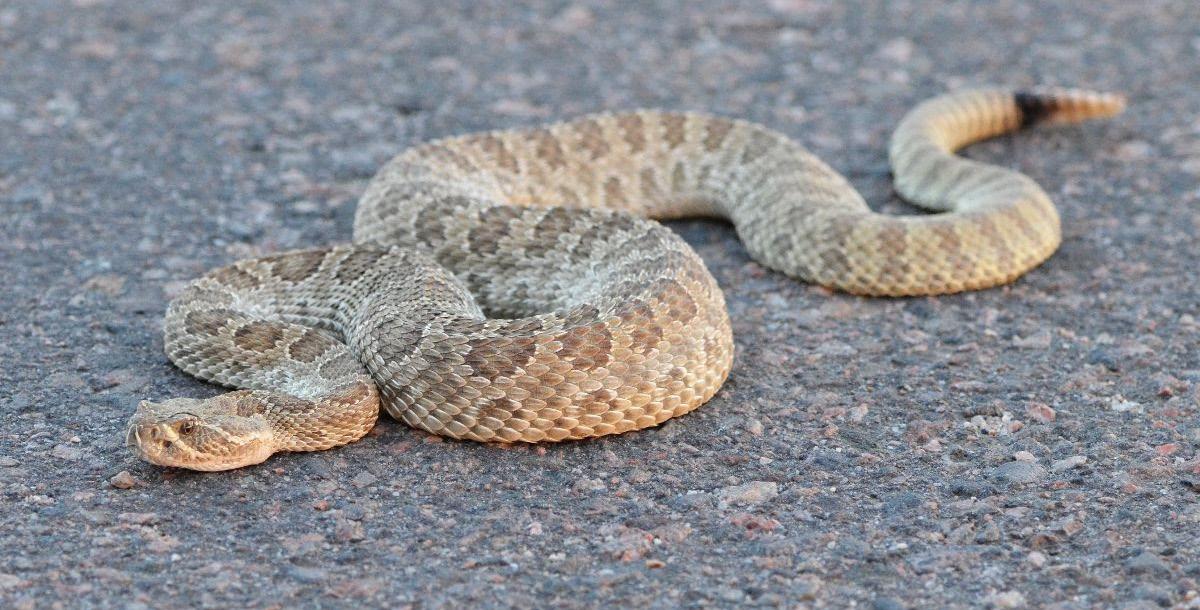
If an encounter with a snake is unavoidable, take these precautions to stay safe:
• Freeze in place. Snakes are often heard before they are seen. If you hear a rattlesnake, FREEZE in place until you or a companion can locate the animal. Attempting to move away from a snake you can’t see may lead you closer to it! Even if the snake is in plain view, freezing movement will reduce the threat you pose to the snake and help you calmly assess the situation.
RATTLESNAKES
PHOTO COURTESY OF WAYNE D. LEWIS — CPW
SAFE » PAGE 13
It is common for rattlesnakes to bask in the sun on roads or trails to warm their bodies. Use caution when biking or hiking in areas with rattlesnakes.
l
Friends M eet! ”
12 WEDNESDAY, AUGUST 23, 2023 | OUTDOORS GUIDE | FORTMORGANTIMES.COM
Recipes for the sportsperson’s kitchen
Recipes for preparing wild game can be as unique as the sportsperson preparing them, and are sometimes as closely guarded as the location of a favorite fishing hole. But every cook can always use a little more inspiration.
If your hunting or fishing trip ended in success, here’s some ways to put your harvested meat to use:
Venison Chili
Serves: 8-10
INGREDIENTS
3-4 lbs. venison. May substitute
Members

FROM PAGE 11
ings may be virtual or in person.
Safe
FROM PAGE 12
• Establish space between you and the snake as they can strike from a long distance. A good rule of thumb is to put at least five feet between yourself and the snake. If possible, move slowly back the way you came.
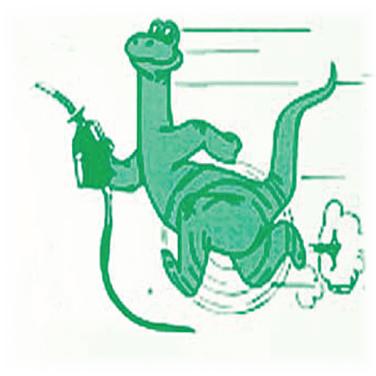
• Leave the snake alone. NEVER, under any circumstances, should you try to catch, kill, provoke or move a rattlesnake. One-third of people who suffer snake bites were bitten as a result of trying to handle or kill the snake. Move around the rattlesnake at a safe distance out of its way.
If you find a snake in your home or garage, call your local wildlife office for directions. In urban areas, many pest control companies can remove them for you.
Keeping your pets safe
The best way to keep your pets safe from rattlesnakes is to keep them on a six-foot leash as required on most public lands in Colorado. Dogs in particular are known to be very curious animals that ignore a snake’s defensive posturing.
other game meat.
2 Tbsp. cooking oil of choice.
4 slices applewood bacon, diced.
1 medium onion, diced. May substitute two to taste.
2 cloves garlic, chopped. May substitute garlic powder.
2 large red or green peppers, diced.
1 jalapeño, diced. May add more to desired heat.
2 cans tomatoes. May use diced or crushed.
Add beans, per preference. Chili powder to taste (recommend 3-4 Tbsp.).
Draw Process Working Group members will be appointed for the length of the planning process (to run approximately through December 2024). The working group will be disbanded upon the presenta -
If you live in an area where rattlesnakes are common and must let your pets outside, try to eliminate rock piles or grassy areas that could harbor snakes or common prey. Do a quick patrol of the area before letting your pets roam free.
Many dog training facilities in Colorado offer snake avoidance training for dogs, teaching them to avoid the sight, scent and sound of a snake.
A rattlesnake bite can have an increased effect on pets due to their small size. In the event of a bite, seek immediate veterinary attention and call the clinic ahead of time. Do not attempt to kill or catch the snake for identification.
According to the Colorado Poison Center, if bitten by a rattlesnake you should:
• Call the Poison Center at 1-800222-1222 for instructions, then go to the nearest hospital.
• Remove any jewelry and tight fitting clothing.
• Stay calm and avoid excess movement.
• Do not cut and try to extract venom.
• Do not use ice, heat, or tourniquet.
• Do not try to capture or kill the snake.
(Optional) 1/4-1/2 tsp. Cayenne pepper. (Optional) 1/2 tsp Paprika. 1 c. Water.
DIRECTIONS
If venison is not ground, remove fat and sinew from venison and chop into small cubes. Heat olive oil in large cast iron dutch oven or pot and cook bacon until light brown. Add venison. Add more cooking oil, if needed. Add onion, garlic, peppers and jalapeño. Saute until peppers are soft. Add tomatoes, beans and mix well. Add seasonings and mix well again. Adjust seasoning to
tion of staff recommendations to the Commission. Staff recommendations will be developed based on the Draw Process Working Group’s input and recommendations.
The Draw Process Working Group is not a decision-making
taste and cook on medium heat until mixture begins to boil. Reduce heat and cook two hours or until meat is tender, checking chili often. Add water as necessary. Omit beans from recipe if you prefer a true chili.
Apple Roasted Dove
Serves: 2-4
INGREDIENTS
12 breasted dove. Increase to serve more.
12 slices bacon. One slice per breast. 1/2 c. Apple or preferred juice. Add more based on pan size.
RECIPES » PAGE 14
body and has no authority on hunting or license management policy, research, or operations. A member may be removed from the Draw Process Working Group at the discretion of the CPW Director based on conduct or lack of participation.
HUNTING/FISHING
• Best Stop between Denver & Nebraska • Easy Access • 7 Days A Week 5:00 a.m.-11:00 p.m. Follow us on Stub’s Gas & Oil 16740 Hwy 39, Exit 66A of I-76 970-483-7867 13 WEDNESDAY, AUGUST 23, 2023 | OUTDOORS GUIDE | FORTMORGANTIMES.COM
Recipes
2 chopped apples
(Optional) 2 chopped green or red peppers
(Optional) 1 chopped onion
(Optional) Garlic clove or powder to taste.
1-2 c. white or brown rice
DIRECTIONS
Breast dove. Remove breast meat from bone or leave bone-in. Wrap each breast in bacon. Secure during cooking with toothpick. Place apple juice in pan and add dove. Bake in oven at 350 degrees for 30 minutes, covered. Check often. Keep meat basted with juice. On the stovetop, prepare white or brown rice. Serve dove on bed of rice. Serve with peppers and apple.
Southwestern Pheasant Stew

Courtesy of Colorado Parks and Wildlife
INGREDIENTS
3-5 sets of pheasant legs
1 onion
2 teaspoons garlic powder
2 tablespoons canola oil
32oz great northern beans
30 oz chicken broth
4-8 green chiles
2 teaspoon salt
½ teaspoon ground cumin
1 ½ teaspoon dried oregano
1 teaspoon pepper
½ teaspoon cayenne pepper
1 ½ cup sour cream
¾ cup whipping cream
Optional:
Corn tortilla chips
Shredded cheese
Jalapeno peppers
DIRECTIONS
Cook down pheasant legs in chicken stock in a crockpot for 4 hours on high.
Chop onion and add shredded pheasant meat before sauteing in oil.
Rinse and drain beans before adding to the meat.
Add broth, green chiles, and remaining seasonings.
Bring to a boil before reducing heat
and simmering, uncovered until liquid is scarce (usually around 30 minutes).
Remove from heat.
Stir in cream and sour cream.
Top with optional ingredients and serve!
Pronghorn Carnitas
Recipe courtesy of Colorado Parks and Wildlife
INGREDIENTS
1 1/2 cups water
6 garlic cloves
1 tsp dried marjoram
1 tsp dried thyme
1 tsp freshly ground black pepper
4 whole cloves, stems removed
1 tablespoon kosher or coarse sea salt, or to taste
1 tbsp lard, vegetable shortening or oil
4 pounds boneless pronghorn shoulder or butt, cut in 4-inch chunks
1/2 tsp kosher or coarse sea salt
2 bay leaves
1 cup freshly squeezed orange juice
2 tbsp sweetened condensed milk
Half a white onion, peeled and coarsely chopped
A pinch of cumin
DIRECTIONS
In the jar of a blender, place the water, onion, garlic cloves, marjoram, thyme, black pepper, cumin, stemmed whole cloves and 1 tablespoon salt. Puree until smooth. Set a large pot over medium-high heat. Add the lard (or vegetable shortening or oil), and once it has heated up, add the pronghorn chunks and sprinkle in 1/2 teaspoon of salt. Brown the meat on all sides, stirring and flipping as each side browns, about 10 minutes.
Pour the onion mixture over the meat, let it come to a simmer and cook for 5 to 6 minutes. Pour in the orange juice and sweetened condensed milk, add the 2 bay leaves, and stir. Let it come to a simmer, then reduce heat to medium-low to low and cover.
Cook covered, stirring and scrapping the bottom of the pot 2 to 3 times along the way until the meat is
completely cooked and coming easily apart if you pull one piece, about one and a half-hour. Remove the lid, cook for another 4 to 5 minutes. Shred with a fork, if desired, before serving on a flour tortilla with sliced lime.
Trout Cakes
Submitted by Celestino Santistevan, courtesy of Colorado Parks and Wildlife
INGREDIENTS
2 pan-size trout (10-12 inches)
1 small onion (finely chopped)
3 Tbsp parsley
2 eggs (well beaten)
1 to 1 1/2 cps dry bread crumbs
3 Tbsp butter
black pepper to taste
DIRECTIONS:
Cook the trout in the oven or a frying pan until the meat is tender and flaky. Debone the fish, and add all the remaining ingredients except the butter. Form the mixture into patties and fry with butter over medium heat until lightly brown. Enjoy!
FROM PAGE 13
PHOTO COURTESY COLORADO PROUD
14 WEDNESDAY, AUGUST 23, 2023 | OUTDOORS GUIDE | FORTMORGANTIMES.COM
Ground or cubed venison can make a tasty chili.





















































































■ ■ Ill ■■■ -Over 75 Choices of Top Shelf Flower Colorado’s Premium Dispensary 140 RAILROAD AVE SEDG ICK, CO 80749 BROADWAY, DENVER & SEDGWICK | $60 Pre-Weigh Ounces 15 WEDNESDAY, AUGUST 23, 2023 | OUTDOORS GUIDE | FORTMORGANTIMES.COM
Opportunities abundant in northeast Colo.
By Colorado Parks & Wildlife
From the grassy prairie lands to the snow-covered peaks, Colorado is home to more than 400 species of birds.
Whether you enjoy watching raptors soar through the sky, waterfowl dive for fish or songbirds flutter through the branches, you can find your favorites at Colorado State Parks. So grab your binoculars, and don’t forget your camera!
Places to go birding
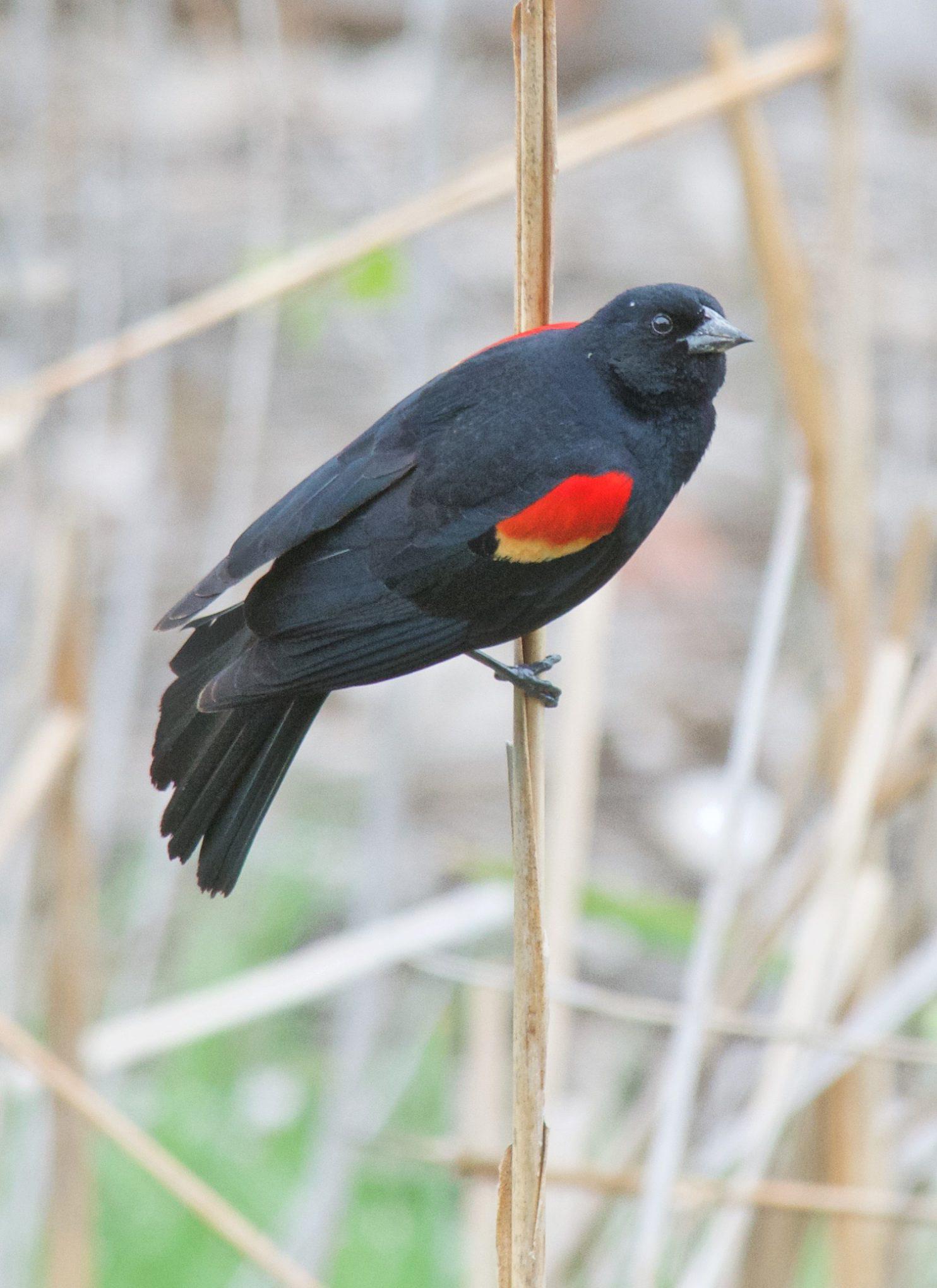
Colorado has many opportunities for observing more than 400 species of native and migratory birds. CPW’s online Birding Locations page offers suggestions on where to go, including these state parks in northeastern Colorado:
Barr Lake State Park: One of the top birding areas in the state, Barr Lake is home to more than 370 species of resident and migratory birds. A pair of bald eagles has taken residence at the park, and visitors can watch them building their nest and raising their young. Several species of waterfowl and shorebirds use the lake as a stopover during spring and fall migration. In the summer, white pelicans, cormorant and egrets join the pairs of nesting great blue herons.
Barr Lake is also the headquarters of the Rocky Mountain Bird Observatory, which aims to conserve birds and their habitats through science, education and stewardship, and operates a birding station at the park.
Chatfield State Park: With 212 species recorded, Chatfield is a primary birding spot. Nesting least flycatcher and American redstart are spotted here more regularly than at any other location in Colorado. Ferruginous and Swainson’s hawks, golden eagles and prairie falcons visit in the summer, roughlegged hawks in the winter.
Castlewood Canyon State Park: Castlewood is home to one of the largest turkey vulture populations in the state during the summer. In the winter the vultures prefer to spend their time in warmer climates, such as Mexico and Central America. From the spring through
the fall, bluebirds call the park home. Canyon wrens can also be spotted throughout the park.
Eleven Mile State Park and Spinney Mountain State Park: Both parks host a variety of migratory and resident birds, but catching glimpses of three rare species — bald eagles, American peregrine falcons and white pelicans — is a real treat. Many of these species can be spotted all year round, but migratory waterfowl will only be present for certain seasons throughout the year.
Jackson Lake State Park: Birders travel from throughout the region to visit because of the abundance and diversity of bird species located at Jackson Lake. This park is home to an abundance of birds—from ferruginous and rough-legged hawks in the winter to Swainson’s hawks in the summer. Long-billed curlews, whooping cranes and northern harriers are occasionally seen, along with the ducks visiting the lake during migration.
North Sterling State Park: Fall brings the seasonal migration of hawks and eagles to the Sterling area. While some are just passing through, others settle down for the winter where the game is plentiful. Early morning is the best time for wildlife watching.
St. Vrain State Park: The 14 ponds located within the park provide oases for migratory waterfowl, shorebirds, songbirds and birds of prey, to name a few. St. Vrain is home to the largest great blue heron rookery in the state, which can be seen year-round. This park is also the only known nesting site of Great Egrets in Colorado. In the winter, there are viewing opportunities for bald eagles, and in the summer American White Pelicans can be spotted as well. Take a look at the Birds of St. Vrain Brochure to see a complete list of bird species found in the park.
Observe birds on the Colorado Birding Trail
The Colorado Birding Trail is a major nature tourism initiative to promote non-consumptive outdoor recreation, conservation of resources by private landowners, and
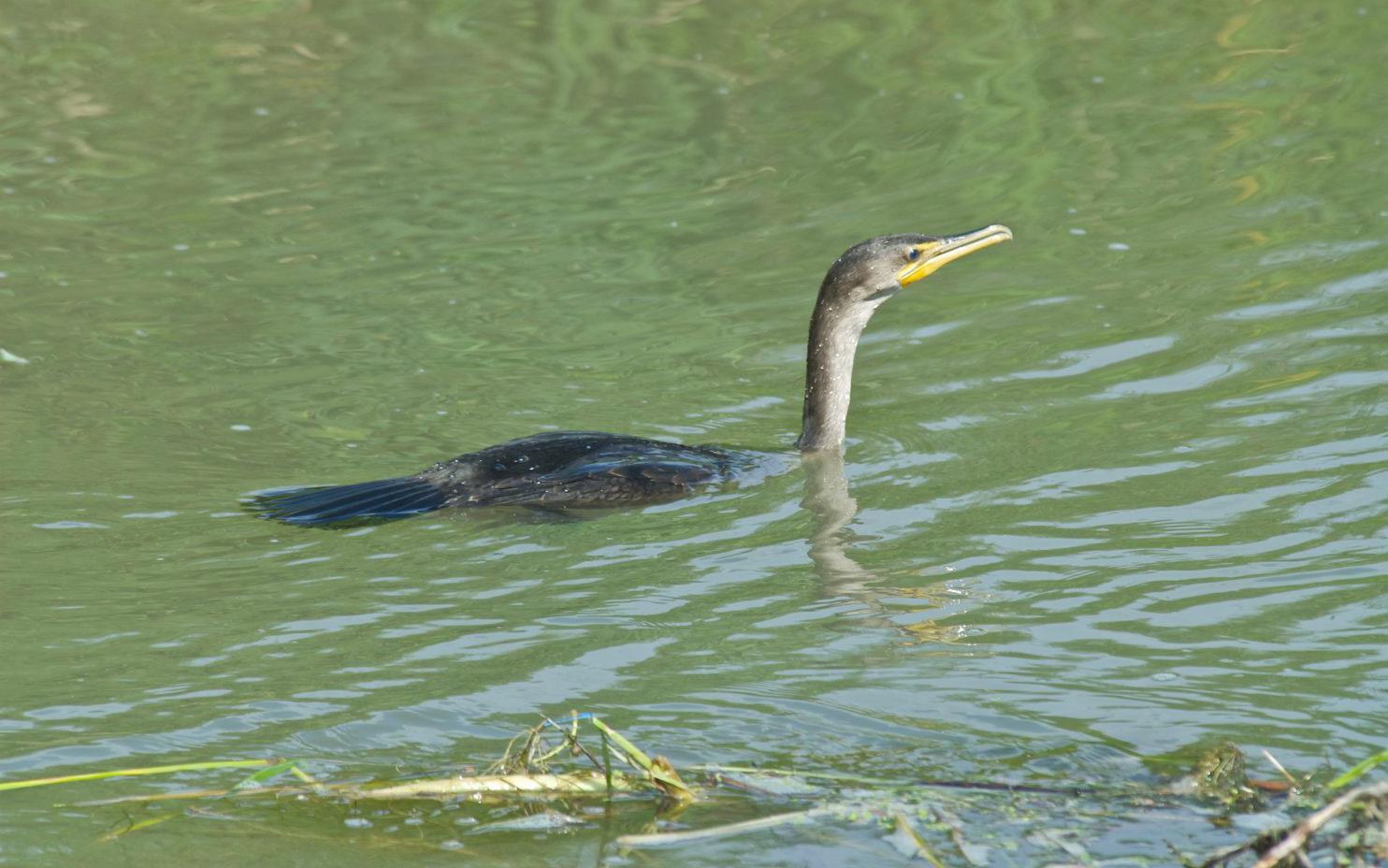
BIRD WATCHING
MACK HITCH — COURTESY PHOTOS
A male redwing blackbird guarding his territory.
16 WEDNESDAY, AUGUST 23, 2023 | OUTDOORS GUIDE | FORTMORGANTIMES.COM
Double-crested cormorant swimming at North Sterling State Park. BIRD » PAGE 17
Bird
FROM PAGE 16





a diversified income for rural economies. The Birding Trail links outdoor recreation sites, both public and private, into a network of sites where visitors can observe birds and other wildlife, often in addition to archaeological and paleontological treasures.

Learn more at https://coloradobirdingtrail.com/.


Birding with kids
Birds are less elusive than many other kinds of wildlife and provide valuable lessons in ecology — the interaction between animals and their environment. Kids enjoy watching birds at any age.
Fast bird facts
Here are some facts from CPW’s profiles on threatened and endangered bird species found in Colorado:
• Double-crested cormorants are the only species of cormorant found in the interior of the North American continent. Cormorants are generally found on lakes and reservoirs in eastern Colorado in the summer.
• To keep Canada geese off your property, fence your yard. Eliminate some of the large expanses of lawn by planting shrubs and other visual barriers. If there is a water feature near your property, change the landscaping to eliminate a smooth slope toward the water. Large rocks, shrubs and visual barriers between grass and water will discourage geese from choosing a property as their residence. During fall and winter, noise-making tactics may discourage these
birds from staying on your property.
• Through CPW recovery efforts, which included cooperative habitat projects with eastern Colorado landowners, greater prairie-chicken numbers have grown from a low of 600 birds in 1973 to a healthy population which can easily sustain a limited harvest.
• Bald eagles’ nests can be seven to eight feet across, usually in tall trees high above the ground.
• Cranes are among the oldest living birds on the planet, with fossil records dating back 9 million years.
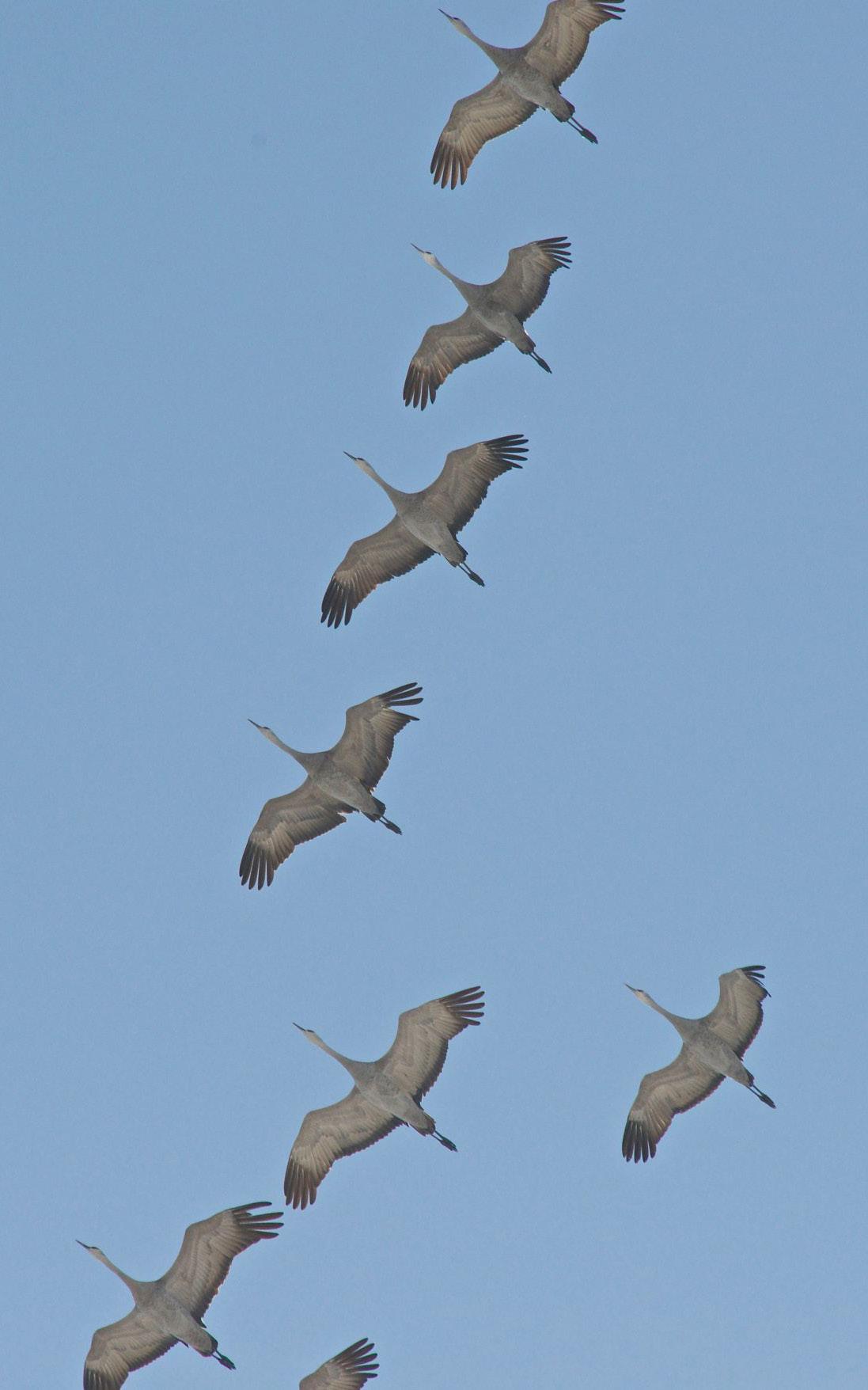
• Perhaps the fastest creatures on earth, American peregrine falcons can swoop down on prey at speeds reaching 200 mph.
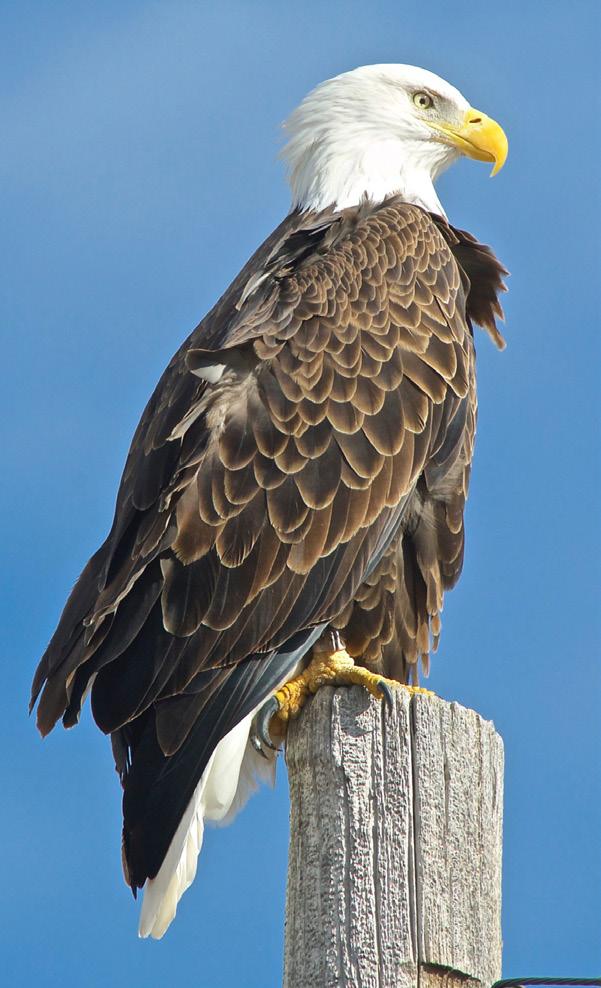 MACK HITCH — COURTESY PHOTO
Sandhill cranes flying overhead during their annual migration.
MACK HITCH — COURTESY PHOTO
MACK HITCH — COURTESY PHOTO
Sandhill cranes flying overhead during their annual migration.
MACK HITCH — COURTESY PHOTO
CORNERSTONEBROKERSLLC.COM CONTACT US 970-542-2444 Stacey Martindale (970) 380-3996 Kelly MurKinS (970) 768-2128 INTERESTED IN FINDING A RECREATIONAL PROPERTY? 17 WEDNESDAY, AUGUST 23, 2023 | OUTDOORS GUIDE | FORTMORGANTIMES.COM
A bald eagle sits on a post near the Merino cemetery.
BIRDING WITH KIDS
Birds are less elusive than many othe r kinds of wildlife and provide valuable lessons in ecology – the interaction between animals and their environment. Kids enjoy watching birds at any age. Consider the activities below to help your children become excited about birds.
Materials:
Binoculars
Field guide (available at local libraries or check with local Audubon chapter)
Journal and colored pencils Camera (optional)
Instructions:
1. Choose a habitat. You can find birds in a variety of places, from your backyard to your favorite state park. You will have the best luck at dusk or dawn and in places with bodies of water.
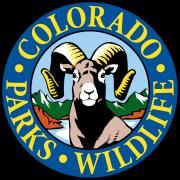
2. Sketch and color the birds you see in your journal. Include some details on the location where you saw the bird. You may also take a photo of the bird to print and include in the journal later.
3. Observe the bird and study its silhouette. Note the shape of its body, beak, tail, wings and legs. Are its legs short or long? Are the wings rounded or pointed? Is the beak short or long, thin or wide?
4. Listen to the sounds the birds make and try to mimic them. This can help you learn to identify birds without seeing them.
5. Determine the category of the bird using your field guide and observations. Birds generally belong in one of eight categories.
Additional Activity:
Build a birdhouse with your children to attract more birds to your yard. Click here for suggested instructions. This activity is adapted from the National Forest Foundation: http://www.nationalforests.org/blog/birding#
18 WEDNESDAY, AUGUST 23, 2023 | OUTDOORS GUIDE | FORTMORGANTIMES.COM
Take in scenery from seat of bike
By Colorado Parks & Wildlife
Biking is a wonderful way to stay active and take in the gorgeous scenery our state has to offer. Colorado’s public lands include many miles of biking trails, and there’s something for everyone. Whether you’re strapping your helmet on in preparation for an intense workout, a big adventure, or a relaxed family ride, our state park routes are the way to go.
It is also easy to plan a custom ride using the Colorado Trail Explorer, COTREX, a trail map that aims to map every trail in the state of Colorado.

Before you mount up, be sure to get familiar with the rules.
Road & general biking rules
General biking rules apply to all cyclists and facilitate a safe, fun riding atmosphere for individuals and families.
Ride Single File: Ride two abreast only when you are not impeding traffic (front or rear) or when all cyclists are on the shoulder. On curving canyon roads, play it safe and ride single file.
Never Ride Against Traffic: Ride in the right lane, except when passing another vehicle, preparing for a left turn or avoiding hazards. Always ride with the flow of traffic. Ride on the paved shoulder whenever a paved shoulder is suitable for bicycle riding is present.
Always Wear a Helmet: You can never anticipate when you will fall off of your bike. Stay safe while riding and encourage yourself and others to wear a helmet.
Obey Traffic Laws: Use hand signals to indicate left or right turns, slowing down, or stopping. Never assume motorists see you or that you have the right-of-way. Expect the unexpected, your first responsibility is to avoid a crash.
Rules for multi-use trails
Multi-use trail rules apply to mountain bikers on shared trails to keep riding courteous, safe, and fun.
Control Your Speed: Obey speed regulations. Slow down and use
caution when approaching and overtaking other trail users. By doing this it creates a safe and fun environment for everyone using the trail.
Yielding on the Trail: Before passing another trail user, be courteous and make your approach known. A friendly greeting or ringing a bell is considerate.
• Bicyclists, skaters, walkers, and others yield to equestrians.
• Bicyclists and skaters yield to walkers
• Bicyclists yield to skaters
• Downhill users yield to uphill users
• Faster users yield to slower users
Eye Protection & Gloves: While out riding on the trail it is important to wear eye protection and gloves. On the trail there is a number of objects that can kick up to your face and by keeping your eyes protected you can continue to see and navigate the trail. Gloves are for better grip on the bike and to protect your hands in case of a fall.
Respect Wildlife: Respecting wildlife out on the trail is important so that you create less of an impact on the environment that makes riding multi-use trails so en-
tertaining and fun. This includes never spooking animals and leaving no trace out on the trails.
Rules for electric bicycles
Here’s what you should know about using electrical-assisted bicycles or “e-bikes”on lands managed by Colorado Parks and Wildlife (CPW).
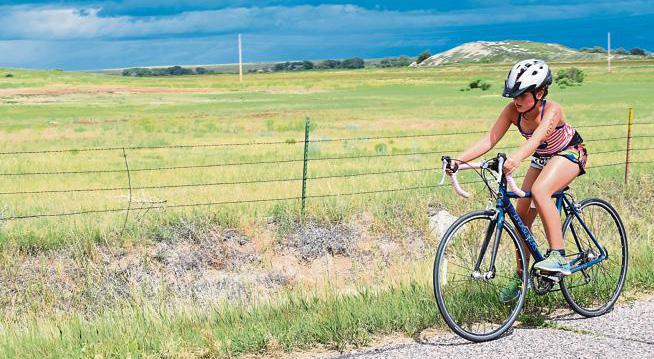
What’s considered an e-bike?
An e-bike is a vehicle with:• two or three wheels
• fully operable pedals
• an electric motor not exceeding 750 watts of power
All e-bikes must meet the conditions for 1 of the 3 designated e-bike classes:
Class 1 E-bike — Equipped with a motor that provides assistance only when the rider is pedaling and that ceases to provide assistance when the bicycle reaches a speed of 20 miles per hour.
Class 2 E-bike — Equipped with a motor that provides assistance regardless of whether the rider is pedaling but ceases to provide assistance when the bicycle reaches a
CYCLING
JOURNAL-ADVOCATE FILE PHOTO
BIKE » PAGE 20 19 WEDNESDAY, AUGUST 23, 2023 | OUTDOORS GUIDE | FORTMORGANTIMES.COM
A young cyclist competes in a triathlon event at North Sterling State Park.
Bike
FROM PAGE 19
speed of 20 miles per hour.
Class 3 E-bike — Equipped with a motor that provides assistance only when the rider is pedaling and that ceases to provide assistance when the bicycle reaches a speed of 28 miles per hour.
Do I need to register my e-bike with CPW?
CPW does not consider e-bikes Off Highway Vehicles (OHVs) and e-bikes do not require an OHV registration or other permit for use on
CPW managed public lands. Where can I ride my e-bike?
• E-bike use on CPW Lands
Class 1 and 2 e-bikes are allowed the same access as road bikes and mountain bikes, while class 3 e-bikes are only to be allowed on roadways and in designated bike lanes.
• E-bike use on State Park Lands
Class 1 and 2 e-bikes are allowed on roadways and designated bike lanes and on multi-use trails and other areas (e.g.,campgrounds) that are open to non-motorized biking.
Class 3 e-bikes are only allowed on designated roadways and designated bike lanes.
• E-bike use on State Wildlife
Areas
In State Wildlife Areas, e-bikes are allowed on designated roads and within designated camping or parking areas where motorized vehicles are allowed. They are prohibited in all other areas.
Visitors to State Wildlife Areas are required to possess a proper and valid hunting or fishing license.
• E-bike use on State Trust Lands
Public access on State Trust Lands is restricted to hunting, fishing and watchable wildlife activity. E-bikes are only allowed for use on designated roads when being used for these activities. Visitors
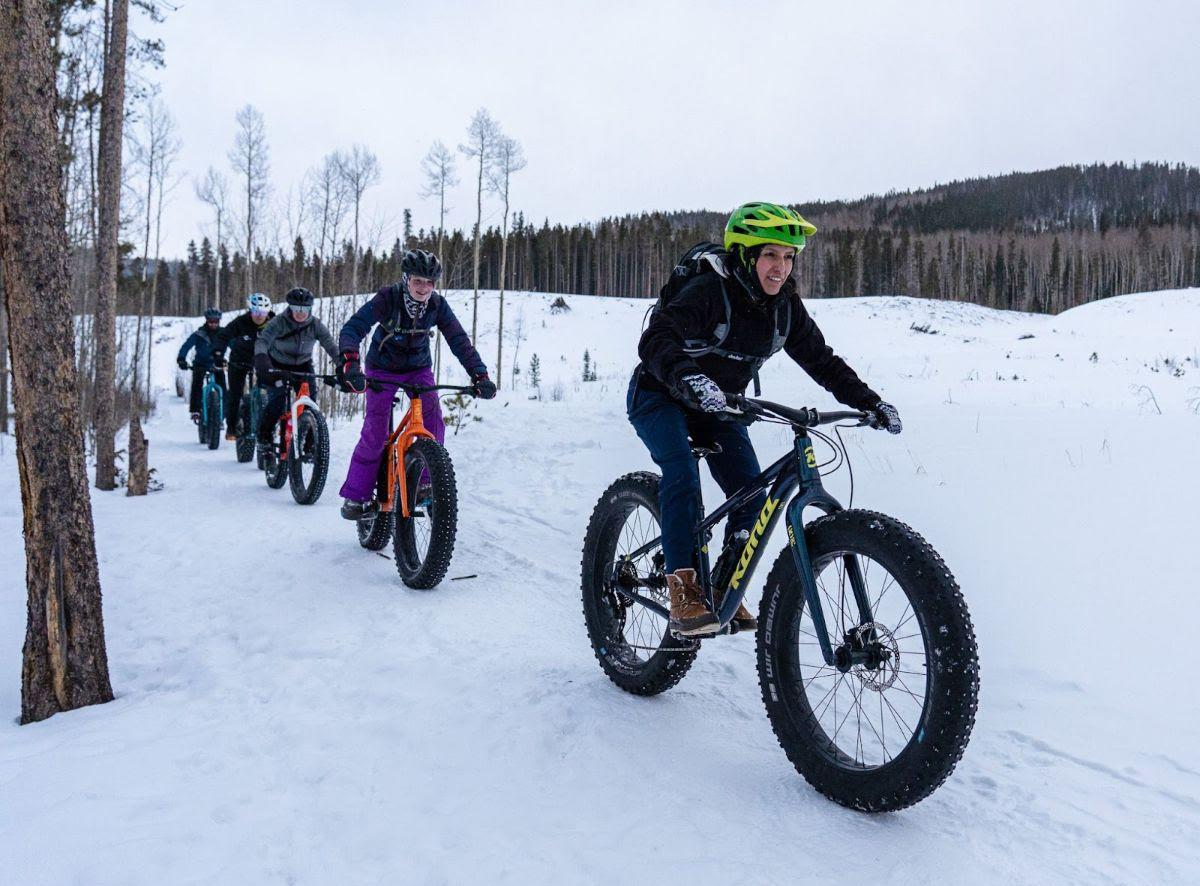
to State Trust Lands are required to possess a proper and valid hunting or fishing license.
• E-bike use on other Public Lands Regulations and classifications vary between different land management agencies. Users should contact individual land agencies — including the Bureau of Land Management (BLM) and United States Forest Service (USFS), counties, and local municipalities — to determine where they are permitted to ride e-bikes on public lands.
For more information, email any additional questions on the e-bike program to dnr_trails@ state.co.us.
COURTESY PHOTO — COLORADO PARKS AND WILDLIFE
20 WEDNESDAY, AUGUST 23, 2023 | OUTDOORS GUIDE | FORTMORGANTIMES.COM
The Cycle Effect heads out on a “fat biking” session. A “fat bike” is an off-road bicycle with oversized tires that are capable of traversing snow, sand, mud, pavement and traditional mountain biking trails.
No need for a telescope
Some suggestions from experts on what kind of stargazing binoculars to buy
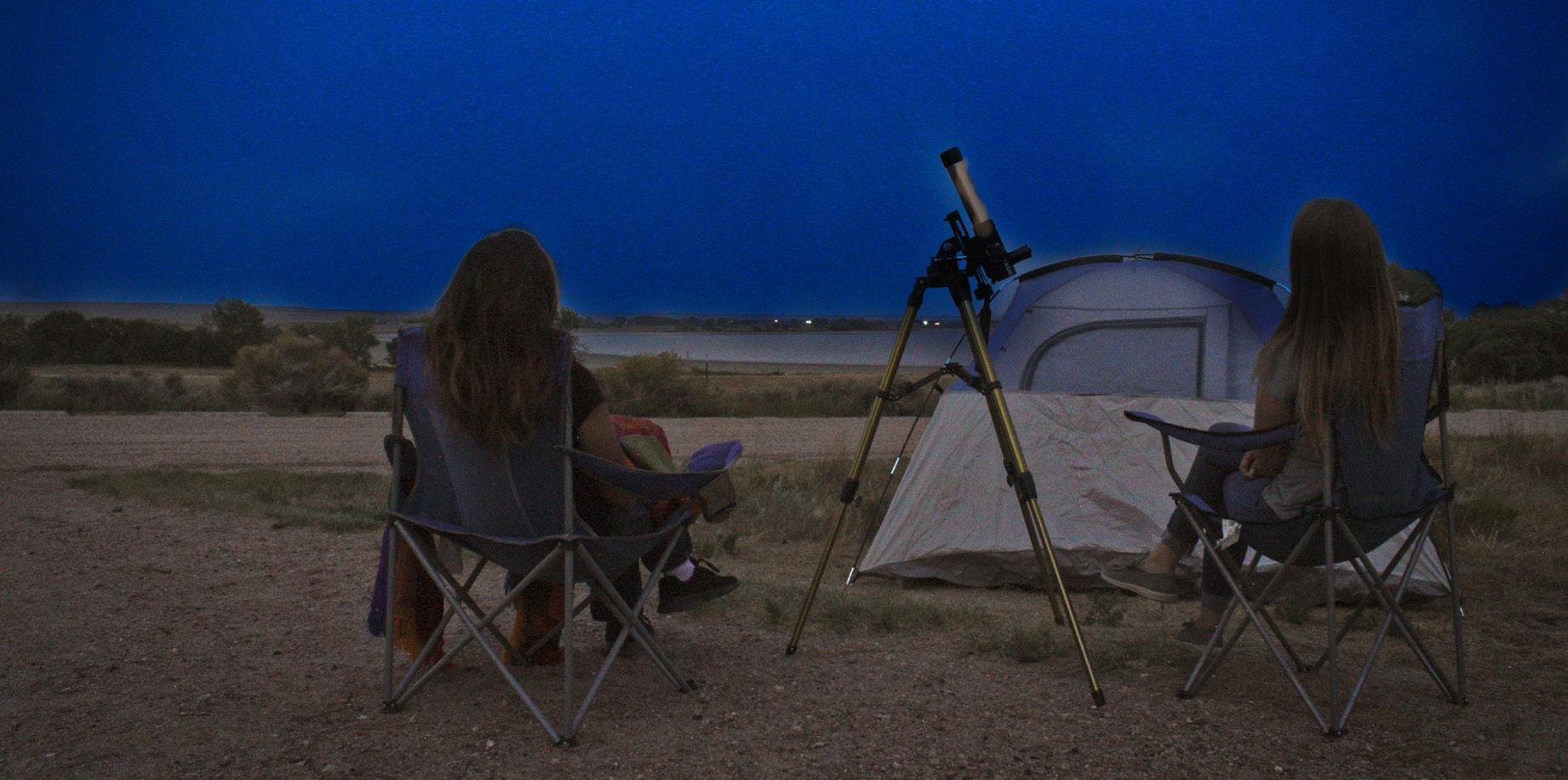 By John Meyer jmeyer@denverpost.com
By John Meyer jmeyer@denverpost.com
If you find yourself increasingly intrigued by the night sky and yearn to see more than what is visible with the naked eye, you don’t need to buy a fancy telescope costing hundreds or thousands of dollars. In fact, astronomy experts recommend that you don’t. Not at first.
They suggest starting with binoculars, and not just because they are less expensive.
Telescopes are more complicated to operate, meaning it takes time to learn how to use them, and they can be clumsy to transport. Binoculars are easier to use and can help you learn the basics of the night sky. While they do offer less magnification, they show wider sections of the sky than the narrow view telescopes provide. They can help you see nebulae, star clusters and several planets, including Jupiter with some of its moons.
“It allows you to explore some of those things before you decide whether to invest in a telescope,” said Jeffrey Hunt, a retired Illinois planetarium director whose website When the Curves Line Up tracks interesting celestial events for amateur stargazers. “Part of the reason for going with a binocular is learning the sky — learning where the bright stars are, where the constellations are, learning where some of the easier things to find in the sky are located. Some are dimmer than the bright stars, and some are just beyond the limit of human eyesight.”
Hunt’s “go-to” binocular for astronomy is a 7×50, meaning it magnifies objects seven times and its apertures — the openings where light
enters — measure 50 millimeters in diameter. You should stay away from 35-millimeter apertures because they let in far less light than 50s.
The owner of Mile High Astronomy in Lakewood, Sorin (he goes by one name), also recommends 7x50s for novice astronomers. Sorin sells an entry-level Celestron 7×50 for $50. Celestron makes binoculars and telescopes.
“This is enough for you to see Jupiter and its four major moons,” Sorin said.
Some people opt for binoculars with 10-times magnification, but Hunt recommends against it.
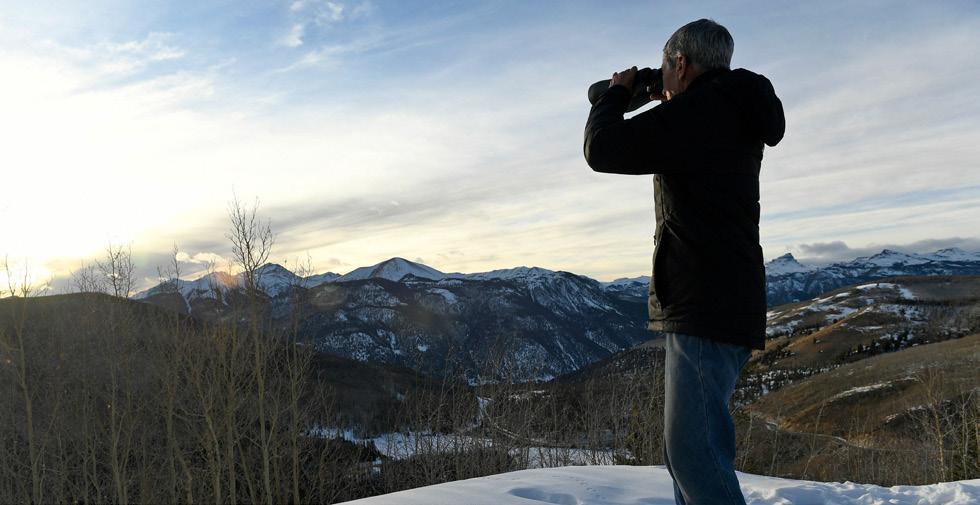
“If you get a 10-power or something even more powerful, it’s really hard to hold steady,” Hunt said.
“7×50 gives you nice light gather-
ing with a 50-millimeter lens, and at seven power, people can hold it somewhat steadily. Not perfectly, but somewhat steadily.” Keep in mind that many binoculars can be attached to tripods through the use of an adaptor, and you’ll probably want that feature if you’re going to use them for astronomy.
Guidebooks and websites can help you learn what you can see with binoculars and where to look. With 7×50 binoculars you’ll be able to see the Orion nebula and the Andromeda galaxy. You’ll see the moon like never before.
“You get a chance to see earthshine,” Hunt said, “which is the reflection of sunlight off the earth that shines on the moon, greatly accented with a binocular.”
Another interesting target with
binoculars is the Pleiades star cluster, which inspired the Subaru automobile logo. With the naked eye, you can make out the six stars represented in that logo.
“You can see a few dozen with a binocular,” Hunt said. “There’s a couple hundred there with a telescope, but the Pleiades are so big that they do not fit into a telescope eyepiece easily.”
Hunt also likes binoculars for viewing conjunctions of planets, an occurrence when two celestial bodies appear to be close together, especially when they involve Venus or Jupiter with a crescent moon.
“A binocular gives you a beautiful view of the scene,” Hunt said. “Or, if the moon is near the Pleiades and you get a nice little crescent moon, it’s just a beautiful sight.”
STARGAZING
HELEN H. RICHARDSON — THE DENVER POST
In this Denver Post file photo, a dark skies astronomy coordinator looks through binoculars near Lake City.
COLORADO PARKS AND WILDLIFE PHOTO
Skygazers at Jackson Lake State Park in Morgan County, which is a designated International Dark Sky Park.
21 WEDNESDAY, AUGUST 23, 2023 | OUTDOORS GUIDE | FORTMORGANTIMES.COM
Keep safety in mind during winter
By Colorado Parks & Wildlife
Snow-packed paths don’t have to mean the end of outdoor recreation at Colorado State Parks! Snowshoeing and cross-country skiing replace summer hikes and nature walks as the snow falls.
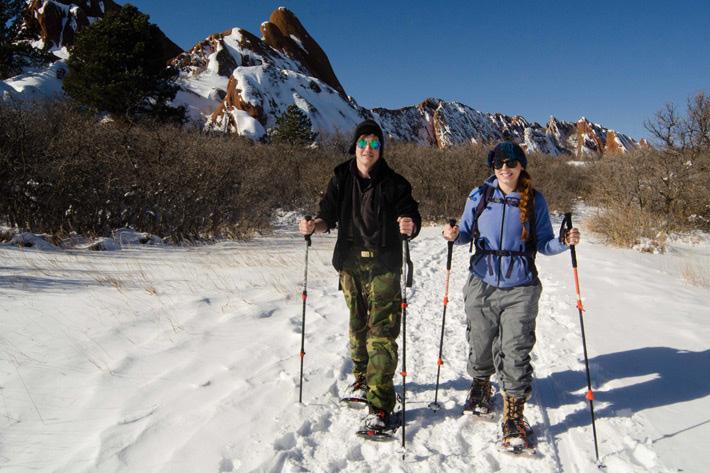
All parks with level hiking trails are usually suitable for snowshoeing and cross-country skiing as long as there’s adequate snow coverage. Park staff can give you best bets on trails and terrain for particular activities. Contact the park of your choice directly or check the conditions on individual parks’ web pages before heading out.
Before you begin your latest winter adventure, be sure you’re prepared for the elements and familiar with important safety measures.
Here’s what to bring when headed out into the cold for an outdoor adventure:
Protection and safety
Remember that, although it’s cold, the sun’s rays are as powerful as in summer months; the snow’s reflectiveness and the altitude only amplify them! Simple preparation can help you avoid a painful snowburn or snow blindness.
• Sunscreen and lip balm
• Sunglasses or goggles listed as preventing snow blindness
• Hat
• Flashlight
• First aid kit
Layered clothing
With unpredictable conditions and strenuous activity, it’s hard to know what you’ll need! It’s best to opt for layers so that warmth and insulation levels are adjustable.
• Snowshoes
• Nordic/Cross-Country Skis
• Boots
• Poles
• Gloves
• Jacket(s)
• Gaiter
• Mittens
• Insulation — wool or fleece layers
• Synthetic or wool socks
• Waterproof outer layer
Other essentials
• Water
• Food (including an extra day’s supply in case)

• Map and GPS
• Extra flashlight batteries
• Matches or lighter
The Fort Morgan Times and Sterling Journal-Advocate, along with our other media partners, remind you to place safety first when enjoying the outdoors.

Please visit cpw.state.co.us and peruse outdoors recreation opportunities, information and activities. And don’t forget to get your kids involved in the outdoors

RECREATION
CPW PHOTO
Many Colorado State Parks offer groomed trails and exciting terrain for snow sports.
22 WEDNESDAY, AUGUST 23, 2023 | OUTDOORS GUIDE | FORTMORGANTIMES.COM






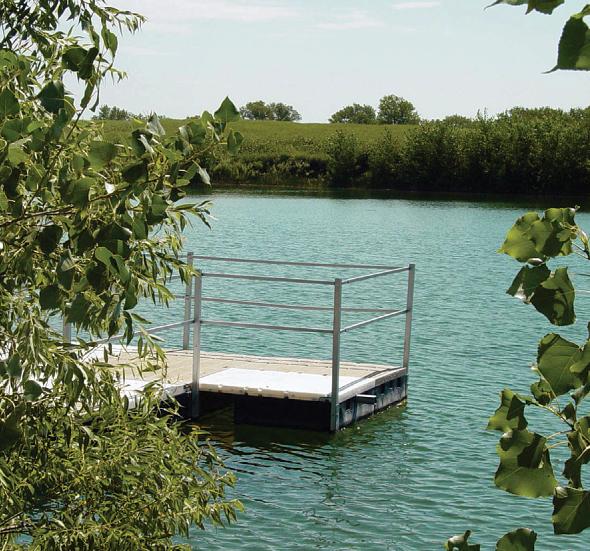


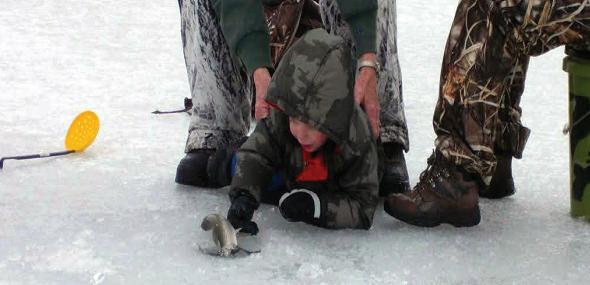


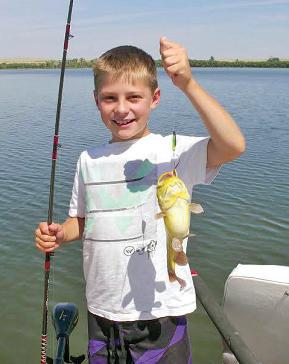




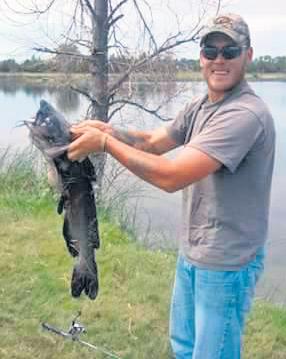








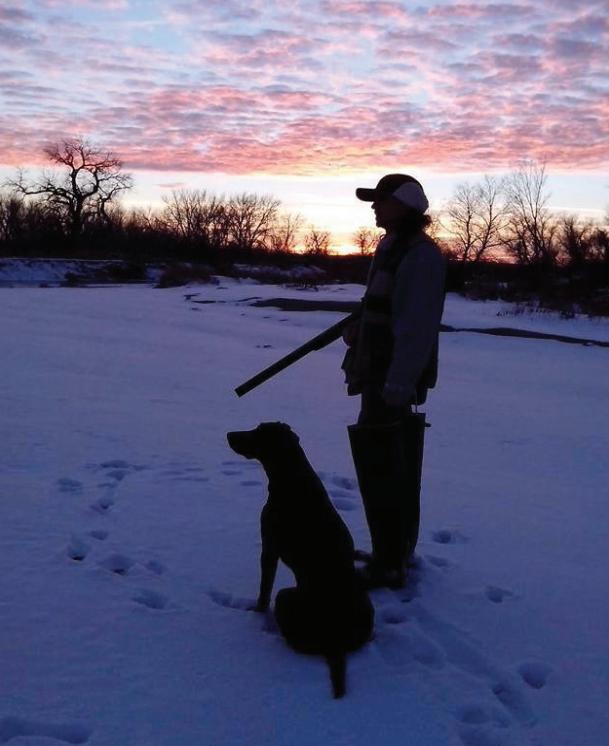



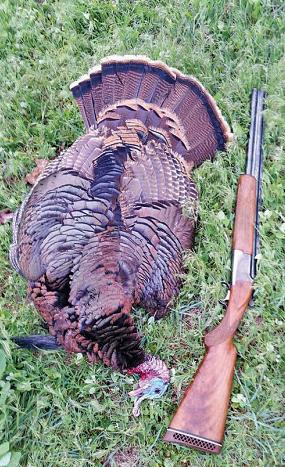
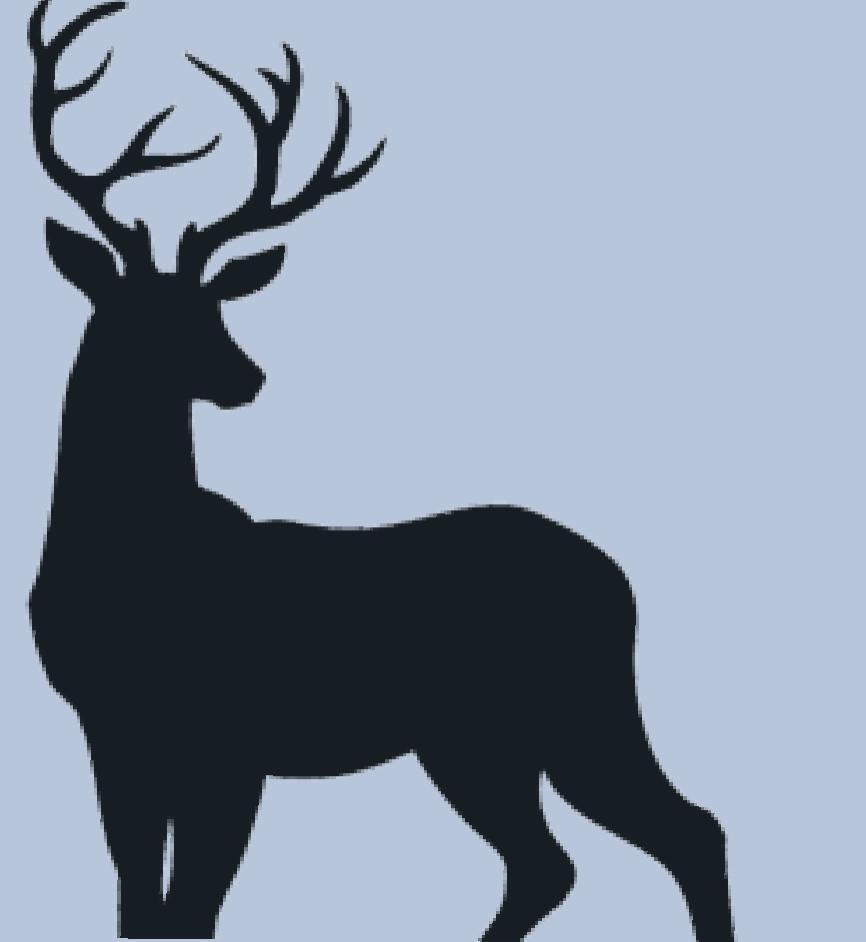






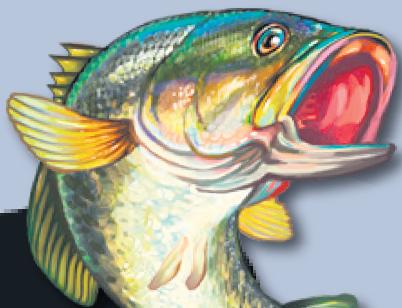
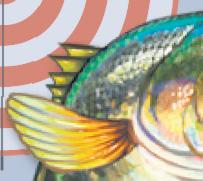

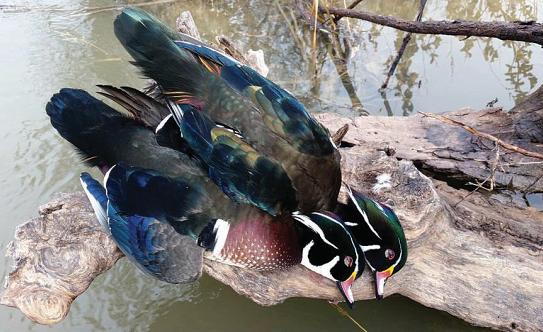
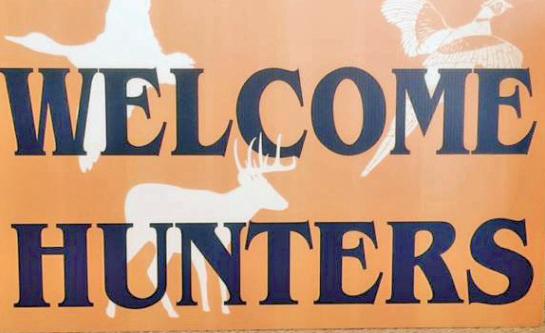
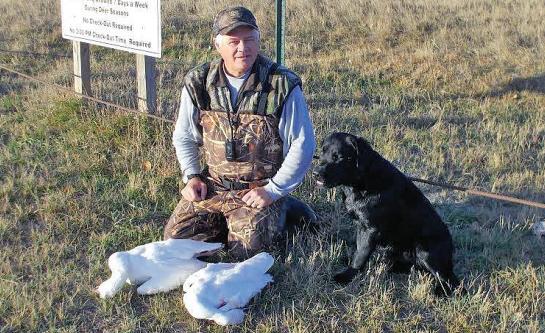
The Great Outdoors... https://sedgwickcounty.colorado.gov/ https://townofjulesburg.com/ https://www.sedgwickcolorado.com/ http://www.rivertrailonline.org/ r isit: For more information: call 970-474-3344 & Hunting Fishing
by:
Sedgwick counTy commiSSionerS 23 WEDNESDAY, AUGUST 23, 2023 | OUTDOORS GUIDE | FORTMORGANTIMES.COM
SponSored
The



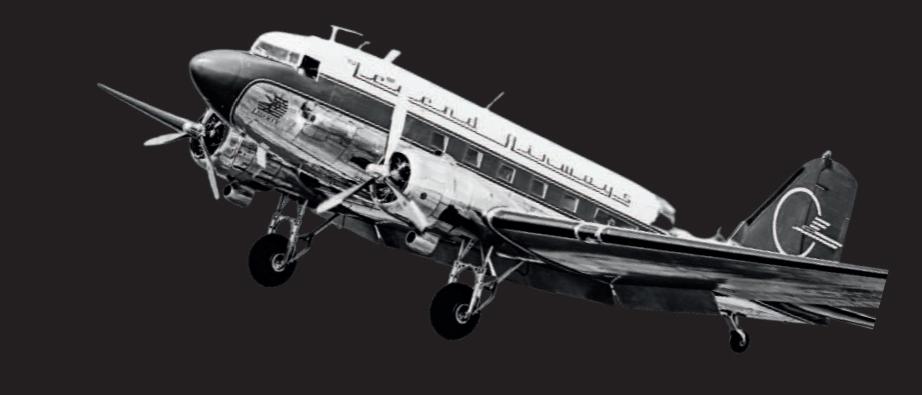

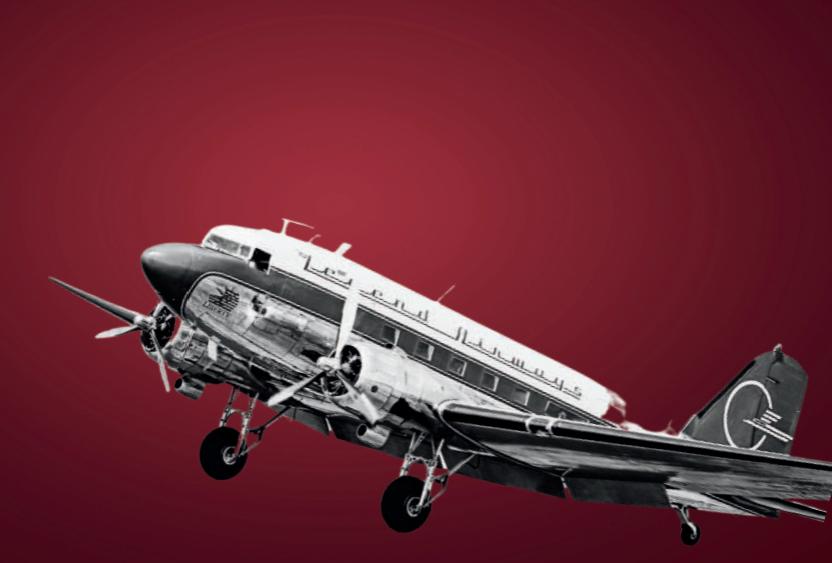

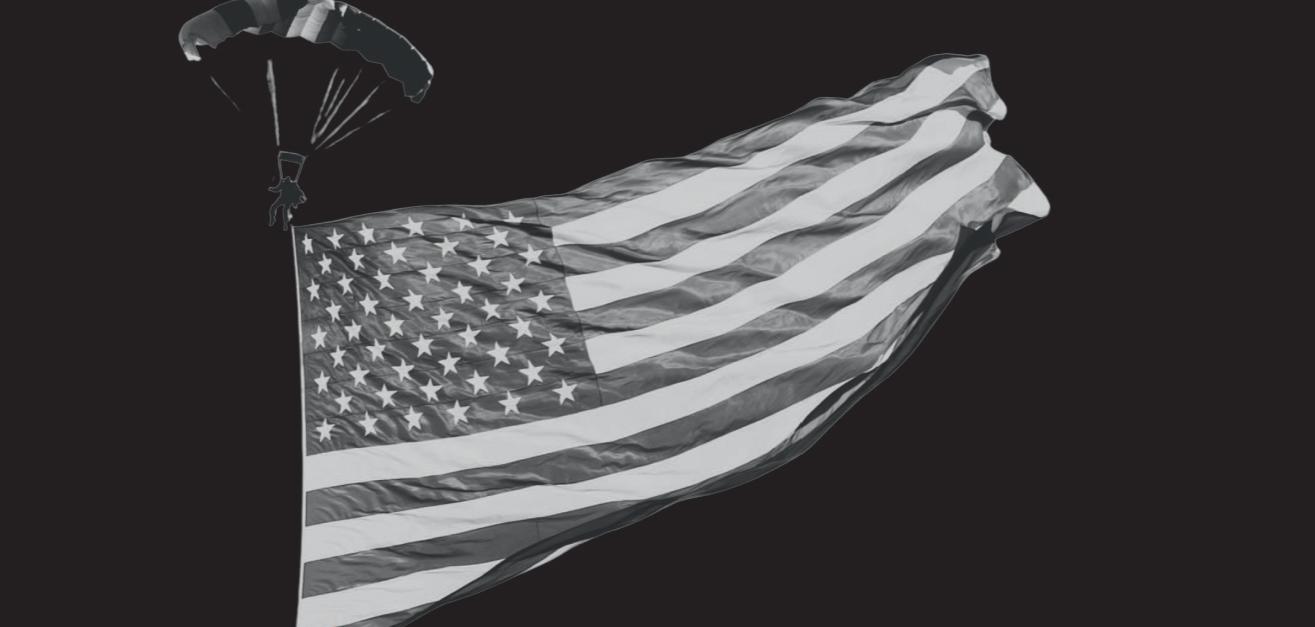


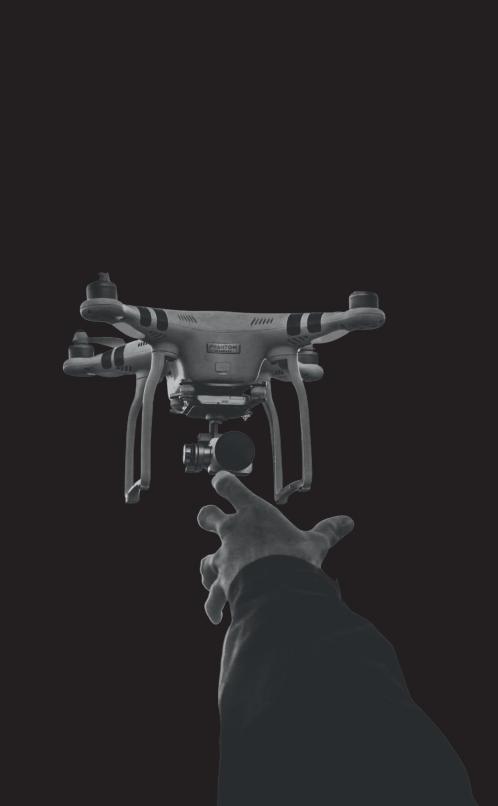
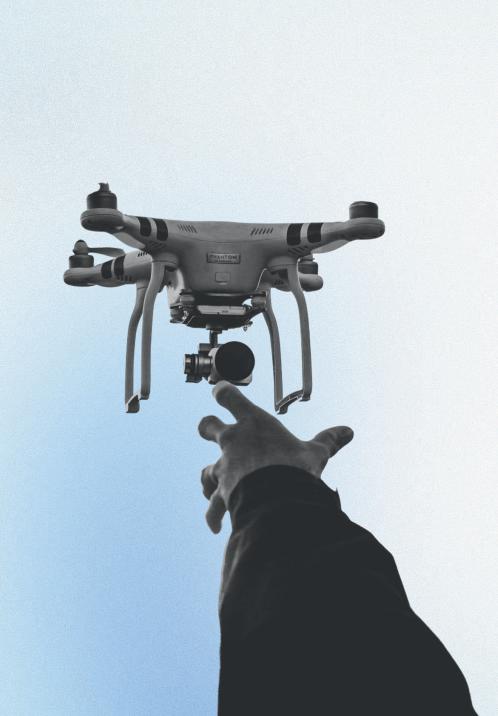









KFMM Airport at Bristol Field 23101 State Highway 52 Fort Morgan, CO 80701 More details at: www.cityoffortmorgan.com MADE TO FLY REMEMBERANCE FLY-IN & AIR EXPO Happening at Vintage war bird planes Drone demonstrations Smoke & flag AND MORE! skydiving jumps Don't miss 8:00 a.m. - 11:00 a.m. Sponsored by SEPTEMBER 9, 2023 Fort Morgan, CO FREE ADMISSION & OPEN TO THE PUBLIC! Presented by 24 WEDNESDAY, AUGUST 23, 2023 | OUTDOORS GUIDE | FORTMORGANTIMES.COM


 Presented By
Presented By















































 COURTESY COLORADO PARKS AND WILDLIFE 2023 Late Season Youth Pronghorn Hunts
CPW PHOTO
COURTESY COLORADO PARKS AND WILDLIFE 2023 Late Season Youth Pronghorn Hunts
CPW PHOTO
 By Colorado Parks & Wildlife
By Colorado Parks & Wildlife























































 MACK HITCH — COURTESY PHOTO
Sandhill cranes flying overhead during their annual migration.
MACK HITCH — COURTESY PHOTO
MACK HITCH — COURTESY PHOTO
Sandhill cranes flying overhead during their annual migration.
MACK HITCH — COURTESY PHOTO




 By John Meyer jmeyer@denverpost.com
By John Meyer jmeyer@denverpost.com
































































